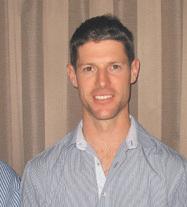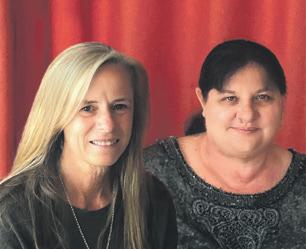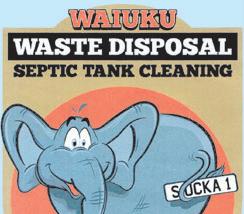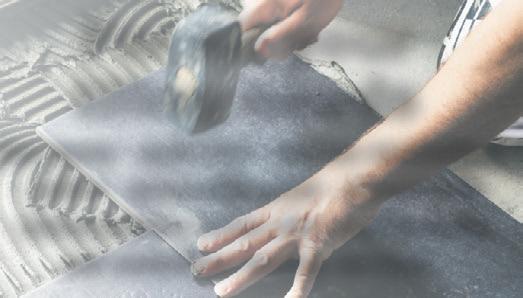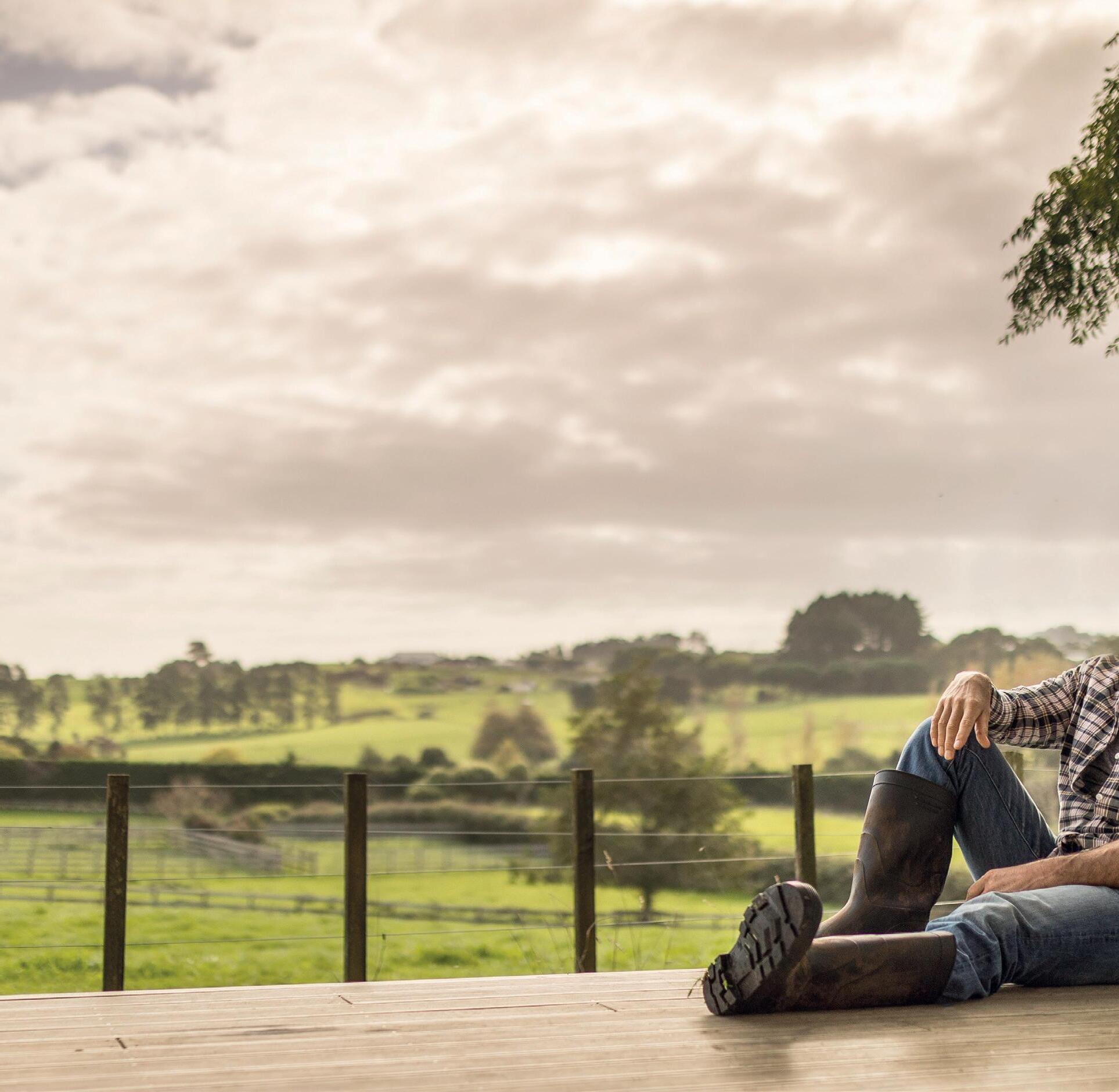July/August 2023

OPIE BOSSON: MUST LOVE HORSES
CATHY COWIN: BRUSHES & ‘COMBS’



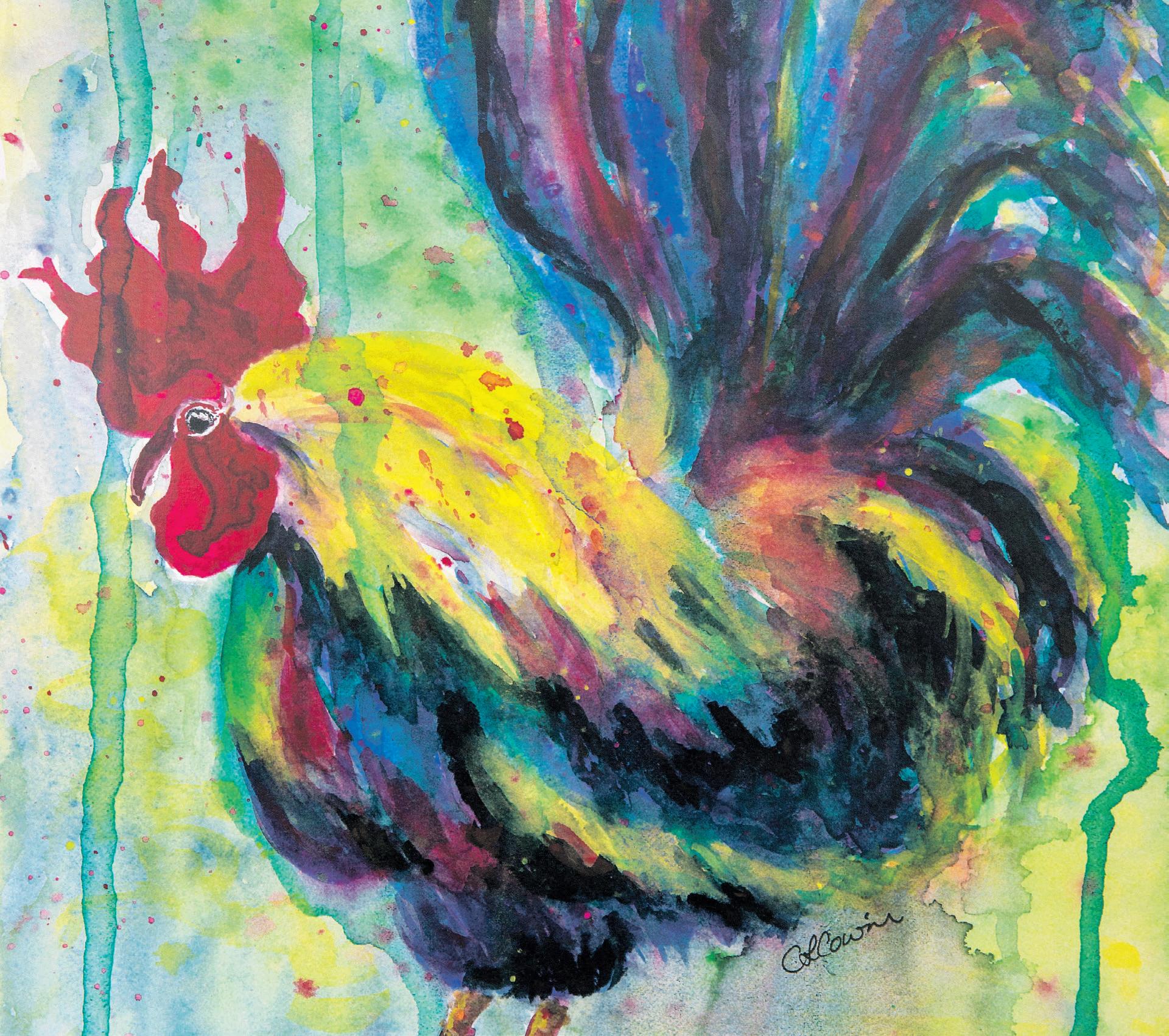
ruralliving.co.nz
RICHARD DAVISON: ET TU, EKE PANUKU?


July/August 2023

OPIE BOSSON: MUST LOVE HORSES
CATHY COWIN: BRUSHES & ‘COMBS’




ruralliving.co.nz
RICHARD DAVISON: ET TU, EKE PANUKU?

The Complete Works of William Shakespeare (Abridged)
July 21-29, times vary, OSPA Theatre, Hall Rd, Onewhero Presenting plays designed to be embraced by the highbrow as well as the hoi polloi, William Shakespeare knew how to appeal to a crowd as this show reveals. Irreverent, fast-paced and funny, it is sure to be well received by sophisticates and... well... the rest of us too! For further information see www.ospa.org.nz.

Community Classics – South
July 22, from 3pm, Due Drop Events Centre, Great South Rd, Manukau
The Auckland Philharmonia Orchestra (APO) brings a variety of musical arrangements to Manukau with this free concert. As APO is usually based in the city, this event provides the perfect opportunity to hear some highly skilled musicians without straying too far from home.

The Auckland Food Show
July 27-30, from 10am, Auckland Showgrounds, Green Lane West, Epsom

Even though the last of the summer wine may be a distant memory, this show reveals there are many tipples to top our tables throughout winter and beyond. Oh, and there will also be plenty to eat (of course!) as cooking demonstrations and more. See www.foodshow.co.nz for details.

Let’s Start at the Very Beginning
July 29-30, St Andrew’s Church, 3 Papakura-Clevedon Rd, Clevedon
Audiences will likely sing the praises of The Clevedon Valley Music Foundation Trust following this event. Including drama, art, music workshops and more, ‘Let’s Start at the Very Beginning’ showcases a wide range of talents from start to finish. See www.cvmft.org for more.

PLEASE
August 10-26, times vary, Papakura Theatre, 41 Elliot St, Papakura
The work of the Chairman of the Board (and chief ‘rat’), old Blue Eyes is set to shine at Papakura Theatre. This cabaret performance, based on the music of Frank Sinatra, will see his iconic sound restored to the boards. For more details visit www.ptc.org.nz.

Hamilton & Houstoun
August 13, from 4pm, Due Drop Events Centre, 770 Great South Rd, Manukau
Veteran pianist, Michael Houston, sets the tune during this concert featuring works by acclaimed Kiwi composer, David Hamilton. Add in a little Beethoven and Shostakovich, and this show is liable to hit all the right notes with classical music fans. See www.manukausymphony.org.nz for details.

August 16, 11am-12pm, Auckland Botanic Gardens, Hill Rd, The Gardens
Pest control specialists will share their expertise during a special tour of Auckland’s splendid botanic gardens designed to help locals play their part in biosecurity. What’s more, entry to this venue and the tour are free for all. For more information visit www.aucklandbotanicgardens.co.nz.

August 19-20, Auckland Showgrounds, Green Lane West, Epsom

Thanks to this event, new parents and those who are ‘expecting’ can glean much about what to expect. Showcasing a vast range of products and services, The Baby Show also includes expert seminars and more. A full schedule is accessible via www.babyshow.co.nz.
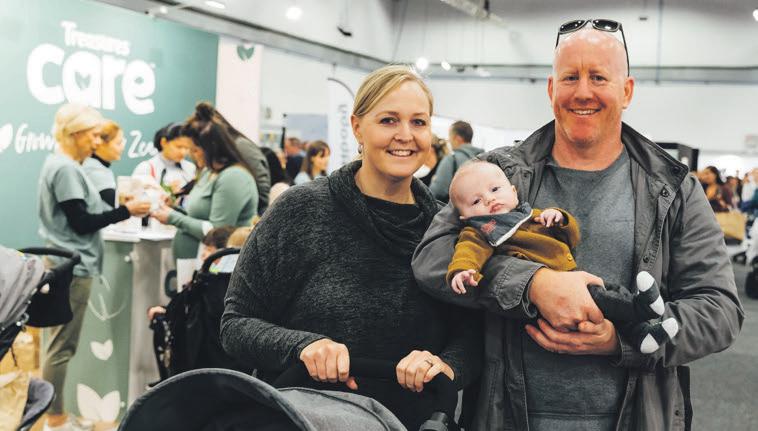
NOTE: information regarding times & dates of these events was correct at the time this issue went to print. However, readers are advised to check events online for updates.

Come spring, perhaps the finest gardens in New Zealand will burst back into bloom. Unfortunately, a recent ‘on the nose’ decision the bloom has (somewhat) come o the rose, for me at least.
Recently, Hamilton City Council decided to implement a cover charge at Hamilton Gardens for ‘out of towners’. These gardens are funded by Hamilton ratepayers, but they have also been fertilised by central government funding too. There are some exemptions, including under 16s and community service and super gold card holders

For context, entry to Auckland Botanic Gardens (our area’s closest equivalent) is free for all. Then again, I’m sure other Auckland attractions already charge along similar lines as Hamilton Gardens.
Overall, I have no issue with such
admission charges – and Hamilton Gardens is splendid, recently named one of Tripadvisor’s top travel experiences worldwide – but I think setting fees based on postcodes doesn’t roll out the welcome mat with such ‘regionalism’ being more exclusive than inclusive.

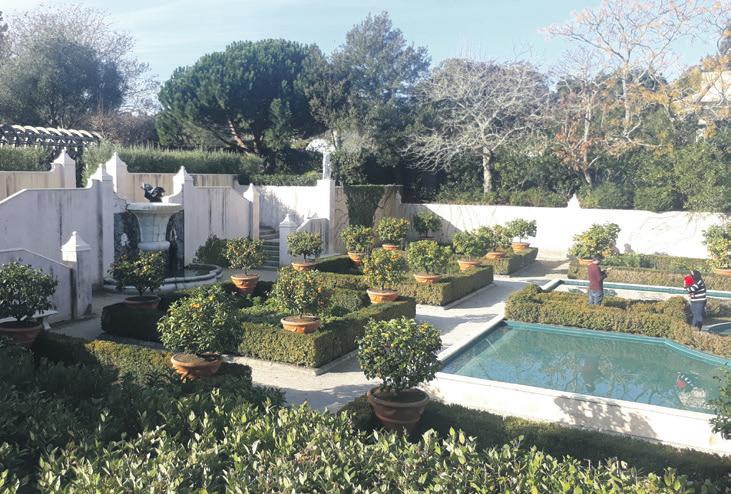
At risk of leading the ‘charge’ of the ‘what’s next brigade’, what’s next? Perhaps an additional levy on ‘out of towners’ using Auckland’s public transport might enable Auckland Mayor, Wayne Brown, to balance his books. I put this to Mr Brown but, unfortunately, we received no firm clarification in time for publication. I hope I haven’t sown a seed!
Unlike Hamilton Gardens (and others), we are not tax/ratepayer funded. However, even those who can’t come to Franklin to pick up a copy can view a free e-edition of this issue online regardless of where in
the world they call home. You don’t need the likes of a utility bill or social services card to read about top jockey Opie Bosson, local artist Cathy Cowin, or our Q&A with Richard Davison from Auckland Council’s Eke Panuku.
Similarly, this issue’s events, competitions, recipes, news, etcetera are free because, to misquote an old movie: ‘If you charge them, they might not come.’
Jon Rawlinson, editor


Rural Living is a FREE monthly lifestyle magazine delivered to RD 1,2,3 and 4 rural lifestyle properties in the greater Franklin district and beyond – Pokeno to Drury/Karaka and Clevedon to Waiuku. It is also available from businesses throughout the district's regional townships, including their key community of Pukekohe.
FEATHERED FERVOUR:
Over the years, Rural Living has shared stories about members of a talented community art group, Clevedon Creatives + Co. Recently, it was Cathy Cowin’s turn to ‘face the music’ as Helen Perry discussed art and more with this inspired local painter. Exemplary of Cathy’s work is the chap on this issue’s cover – roosters often feature among her artworks. To read more, see pages 24-25.

Editor: Jon Rawlinson
DDI 09 271 8036 editor@ruralliving.co.nz
Sales: Kelly Cooke DDI 09 271 8026 kellyc@ruralliving.co.nz
Art Director: Clare McGillivray DDI 09 271 8067 clare@ruralliving.co.nz




Design: Claire Robertson clairer@times.co.nz
Publisher: Brian Neben 151 King Street, Pukekohe, Auckland PO Box 38 232 Howick, Auckland





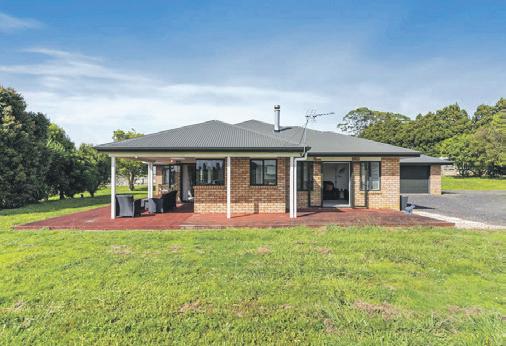



It may seem like we’re ‘double booked’ on this month’s Win page, but when a copy of this ‘great Scot’ landed on our ed’s desk it was too hot to handle! Highland Cattle is a must have for enthusiasts of the breed, especially farmers and lifestylers. Copies of this book are available via www.highlandcattle.org.nz, however we have a copy for one lucky reader.

Stephan Janz: Highland Cattle – Icon of the Scottish Highlands | Erling
Who needs a spoonful of sugar to help the ‘medicine’ go down? While Daily Goods’ tonics are formulated to deliver a healthy dose of natural and organic ingredients to help boost our immunity, they’re designed to taste great (hot or cold) too. Available in three flavours, Daily Good can be purchased (RRP from $19 each) at select supermarkets, chemists and health food stores. We have TWO sampler packs to give away.
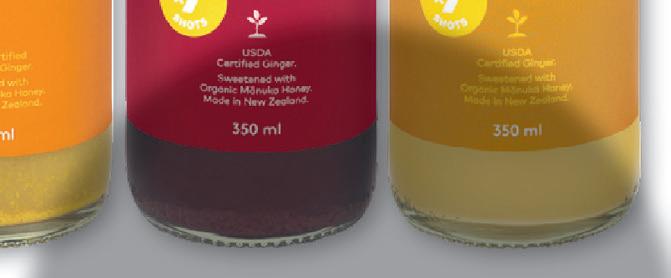



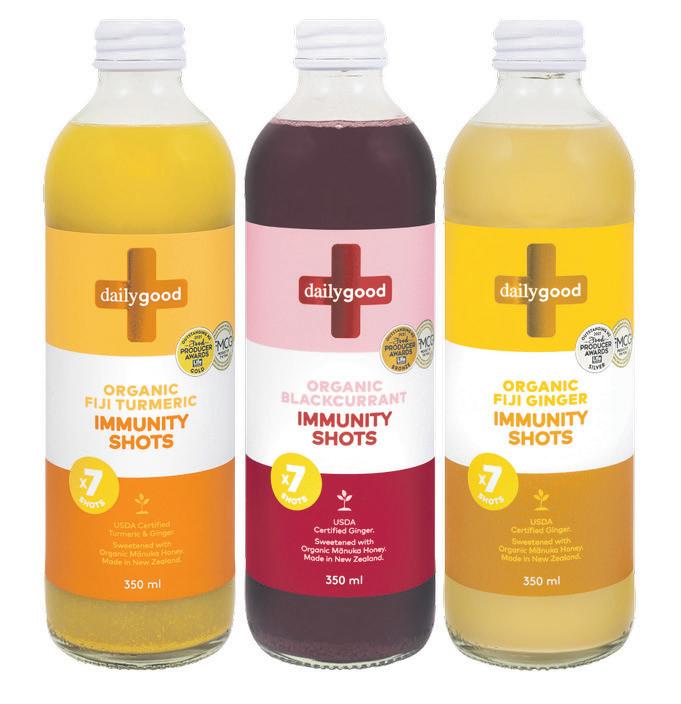
Sometimes it’s nice to stay cosy inside our ‘bubbles’. By trapping warm, moist air, Showerdomes are designed to reduce condensation in bathrooms and help prevent mould growth. These clear, acrylic domes can be easily installed in many showers so our bathrooms can become warmer, drier and healthier. One lucky reader will win a Showerdome DIY kit valued at $339.



A YouTube sensation, Nick DiGiovanni is known for being fearless in the kitchen. Featuring a wide range of recipes (including such staples as pasta dough and homemade butter), this book sets out to prove that food need not be fussy to be fantastic. We have a copy up for grabs.

Nick DiGiovanni: Knife Drop | RRP $55 | Alpha




Verita Villas is an exclusive enclave of 23 European-inspired luxury masonry homes selling now in Karaka Harbourside. This is a rare opportunity to secure a dwelling of the highest quality in an enchanting corner of Franklin.









He’s a man with the plan – many of them in fact! The south Auckland priority location director with council organisation, Eke Panuku, Richard Davison is right ‘at home’ in Franklin, taking a leading role in housing and town centre developments, especially in Pukekohe. Rural Living posed questions to Richard about the changing face of our landscape… over the gate.
Where are you from originally and how familiar are you with Franklin?
I grew up in Zimbabwe and moved to Auckland to study in my twenties. I live in Auckland City, but I’ve been actively involved in work in Franklin for more than a decade, leading the Pukekohe Area Plan, The Unitary Plan future Urban Zone and all the Special Housing areas in the area. This has given me a unique insight and I’m passionate about ensuring that it retains its mana.



What drew you towards urban design as a profession?
I was always interested in form, design and building from a young age, which I’m sure is partly due to my mother’s influence (she is an urban planner). I studied as an architect and over the course of my career have been lucky to be in roles that have allowed me to expand further into urban design, planning and development.
I have been managing urban regeneration programmes for the past six years or so. In some









ways it’s like being the conductor of an orchestra; I love bringing people together, contributing to building the city in which I live and ensuring it’ll continue to be a great place for my kids in the future.
Is Eke Panuku involved in developing growing land?
Eke Panuku ensures development happens where it makes the most sense, improving existing town centres, not where land is most productive for agriculture.
Development outside town centres is not within our scope. We encourage development in brownfield areas – sites that have been built on previously.
Overall, what is Eke Panuku doing for local town centres? How about Pukekohe in particular?
We make sure public spaces in the heart of Auckland’s communities are robust and able to support growth naturally occurring in these places. Our e orts are laser focused on neighbourhoods with massive future potential. It’s about repurposing ine ective or tired sites so that we don’t have to build out into spaces that should be retained for future generations. We focus on improvements for locals, including playgrounds, laneways and even murals and events.
In Pukekohe alone there are 27 council-owned properties approved for potential redevelopment. Guided by the Pukekohe Masterplan, we will sell these sites to developers, who are, hopefully, local or have local roots, working with them to make sure they o er the amenities Pukekohe needs. It’s important developments contribute to the wider plans for Pukekohe and add value for everyone who lives there.
Is town centre development (especially in Pukekohe) ensuring there are plenty of local jobs?
Absolutely. A great example is our recent sale of the former council building on Manukau Road, which will be developed into a new medical centre [estimated completion of stage one by Jan 2026]. While bolstering
local healthcare options, it will provide more local jobs. Franklin is seeing considerable investment from businesses, such as Fisher & Paykel Healthcare’s plans in Karaka, and substantial investment at Drury Crossing. This complements the region’s well-established rural businesses.
Our work in town centres is intended to provide more places for local businesses and services, along with opportunities for workers to find a job closer to home. We also focus on activities and events, safer connections for people, upgraded shop frontages, improved parking facilities, upgrading character buildings and many other benefits over time. These projects are not being rushed through; they are complex and overlapping and will take many years to unfold.
Is enough being done to ensure infrastructure (especially transport) is in place where and when it’s needed to support residential growth?
Delivering infrastructure to support growth is a key part of what Auckland Council does. It might feel, sometimes, that things take forever to get done, but there’s an enormous, collaborative e ort to dot the ‘is’ and cross the ‘ts’ from the start and we’re doing things in a coordinated way. With great transport connections, South Auckland is the gateway to and from Auckland.
You were also involved in the Paerata Rise development – a success story?
I was part of a large, councilwide team. Created as part of government response to the supply and a ordability of housing, it is a well-designed
and considered development progressing in stages. However, it was challenging given its distance from established town centres, utilities and services. From an urban regeneration and sustainable point of view, it makes more sense to improve town centres that already exist rather than develop from scratch.
Due to their commercial and industrial zones, will the Drury developments provide more jobs locally than Paerata Rise, for example?
As I am not involved in these developments, I can’t comment specifically. However, urban design principles and master planning allows for balance and sustainability in the creation of new communities.
If you could grow any plant or raise any animal (real or imagined), what and why?
I’ve been a regular visitor to the Pukekohe Show, so perhaps it’s time for me to consider entering a pet lamb or a calf – my kids would love that!
If you could be Minister of Housing for one day, what would you do first and why?
Considering the recent weather events, I would prioritise stormwater to ensure people have warm, dry, quiet and safe housing.
If you could invite any three people to dinner (living or dead), who and why?
I’d need to invite four – all of my grandparents. I miss them, would love for my children to meet them and to share my stories of New Zealand with them.
Racing laurels don’t come easy. Recently, JON RAWLINSON spoke with a legendary jockey (who featured on the cover of our Feb-Mar issue) about what it takes to hoof it with the best.
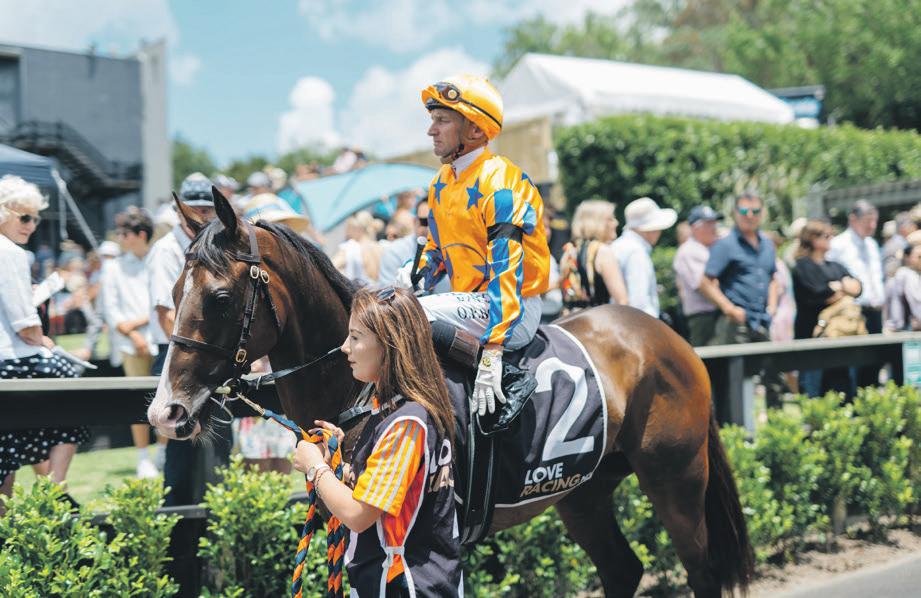
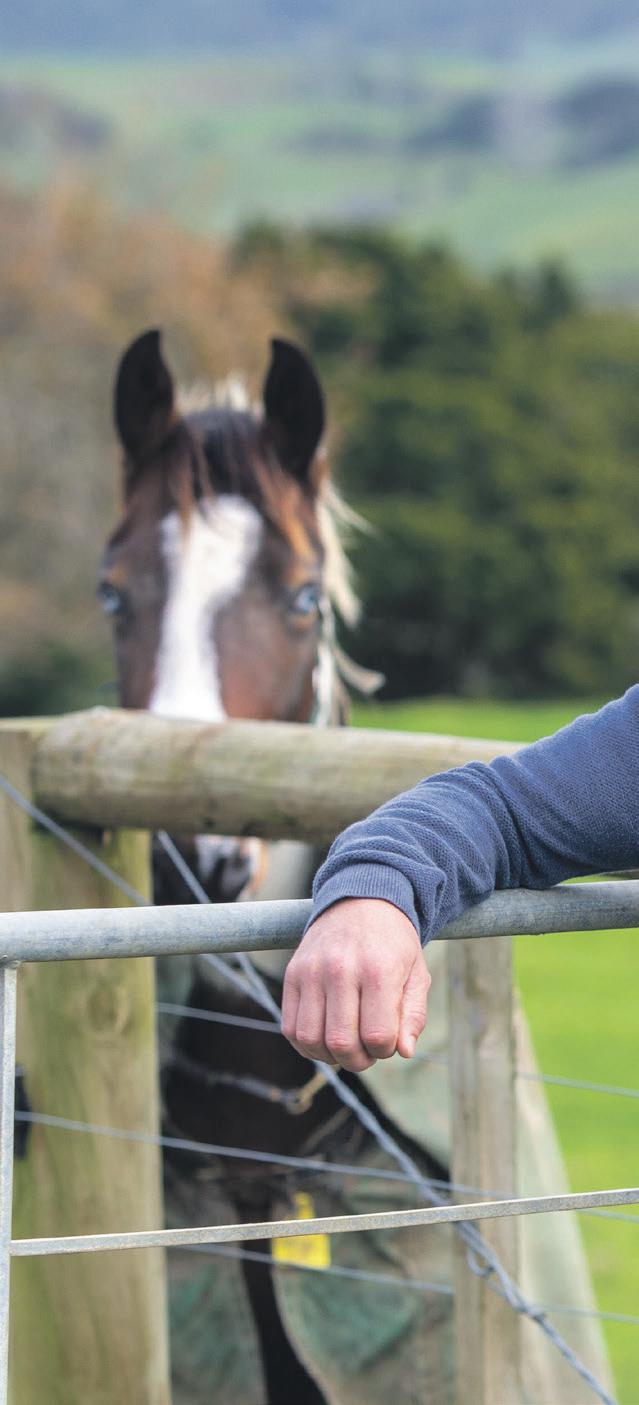
He’s no bosun (no mere deckhand), instead Owen (Opie) Bosson is a master and commander when given charge, at full charge, of some of the world’s finest thoroughbreds. Set to be invested as an O cer of the NZ Order of Merit (ONZM) in September, this highly acclaimed jockey credits good fortune with helping carry him down the home straight – time and time (times almost 100!) again.
“Luck is a big factor,” the Pukekawa local says. “You also have to work hard and learn to take the ups and downs. I’ve broken a couple of shoulders, my sternum, ribs and had a horse break its front legs, but (touch wood!) I haven’t
had a really bad fall. While there’s no point worrying about it, you have to know how to stay out of trouble or trouble’s going to happen.”
There’s more than luck required to achieve in excess of 1800 wins, including almost 100 Group One races and six Karaka Millions. This veteran horseman has drawn on strategy, skill and strength (needed to direct such powerful mounts) as well as teamwork.
“You have to love horses, number one – they’re a little factor, not huge,” he laughs. “You need a nice horse underneath you. Nine times out of ten, I’m on a horse I’ve never ridden before, so we have to work things out together. I’ll have a plan A, B, C and D, or more, because
everything can change as soon as you jump out of those barriers.
“There’s also a lot of work behind the scenes, from the people who muck out the stables to trainers and vets. They all work hard to get the horses ready and I’m just the lucky one who gets to ride them on TV.”
While size does matter in thoroughbred racing, determination is more important, Opie asserts.
“I’m one of the bigger boys so I have to lose a bit of weight every race day. Sometimes I feel terrible, dehydrated, when going to the races. It comes down to determination and, when I throw my leg over the horse, I can’t really think about it. I’ve always had to rip o a few kilos every race day, but my
body seems to be used to it.”
Now an a rmed Franklin local, Opie continues to ride for Matamata-based Te Akau Racing. Despite stints in Hong Kong and Singapore, he has raced for the club throughout his career. But even for such an accomplished rider, there’s no ‘inside track’ advantage.

“Te Akau has been great and they buy beautiful horses. I still call Matamata my ‘hometown track’, but I’m at Pukekohe for most meetings. I’ve been around long enough to know every New Zealand track inside and out so there’s no extra [home] advantage for me, but horses trained at Matamata (for example) do seem to go a lot better there.”
Originally from Rotorua, Opie
is a bit of a thoroughbred himself. Practically born in the saddle, he trained under a renowned former jockey and trainer.
“I have photos of me (aged four or five) dressed as a jockey, so it’s always been something I wanted to do. I rode trackwork for my dad [an accomplished amateur jockey, also named Owen] before my apprenticeship at Te Akau with Stephen Autridge (my godfather) when I was 14,” he confirms. “To race professionally, you definitely want to be riding before your twenties but, as there are some good jockeys who never really rode until they were 15 or 16, there’s always a chance.”
Chance has proven a fine thing for
“There’s also a lot of work behind the scenes, from the people who muck out the stables to trainers and vets. They all work hard to get the horses ready and I’m just the lucky one who gets to ride them on TV.”
Opie in more ways than one. While only the best jockeys are trusted with the most magnificent mounts, the right horse greatly improve their chances of securing laurels. Over the years, Opie says he has been privileged to ride some of the finest thoroughbreds.
“I have three or four that are up there,” he confirms. “Melody Belle was an absolute champion, Te Akau Shark was a great horse, then there’s Mongolian Khan – he gave me my biggest win, in the [2015] Caufield Cup. I also won some big races on Turn Me Loose.”
Asked if he has any favourites that may not have secured top honours, he laughs:
“Nah, I don’t think about them!”
much less be put out to pasture on his Pukekawa farm.
“We love it here. I have beef stock, a few dairy grazers and horses. I do most of the work myself, with some help from friends when I’m away or need a hand,” he says. “I’ll really get going again with racing in spring, probably with the Foxbridge Plate at Te Rapa. I’m sitting on 90 Group one wins so it would be nice to get to 100 and then see what happens after that.”
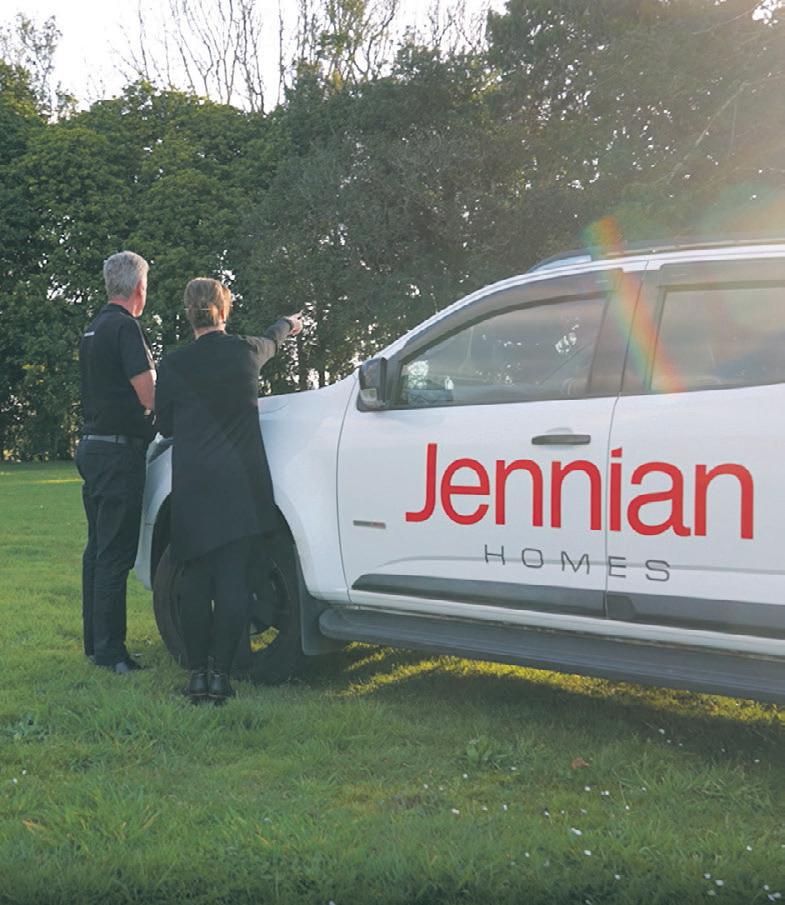
Inducted into the New Zealand Racing Hall of Fame earlier this year, Opie Bosson’s trophy cabinet is rather full. However, his ONZM (O cer of the New Zealand Order of Merit) for his services to racing in this year’s King’s Birthday Honours will take pride of place. He expects to attend his investiture in September – race schedule
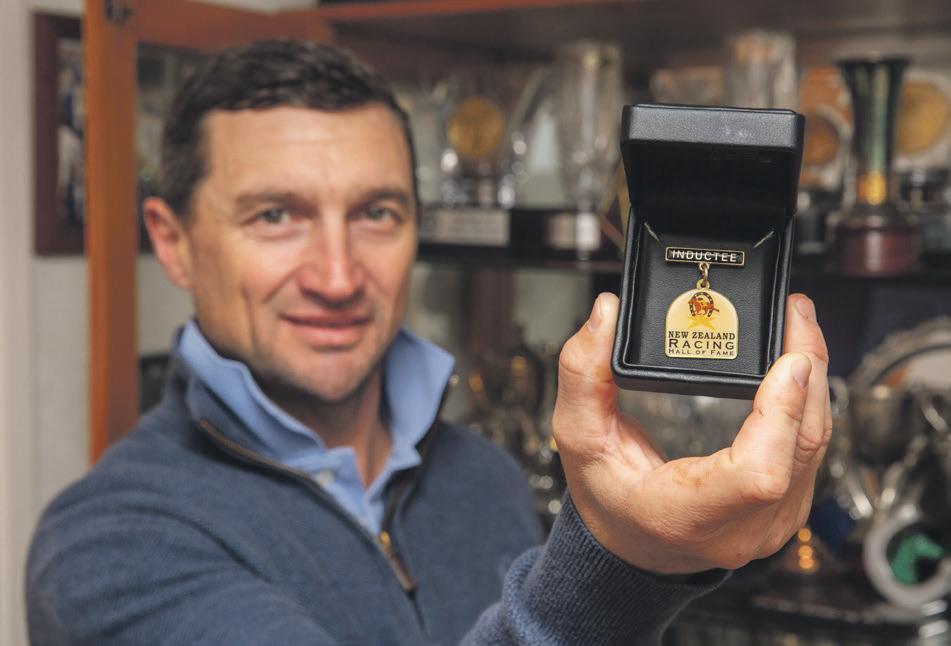
permitting!
“Yeah, I have a lot of trophies –the cabinet’s full and I have boxes and boxes of them in the garage,” he says. “But it [the ONZM] is pretty special because not many people get one of those.”
As for that schedule, Opie will be back in the saddle again soon and has no plans to hang up his spurs,
We also extend congratulations to another local named an ONZM, Clevedon’s Dr Joyce Cowan, for more than 50 years’ service to midwifery, primarily throughout south Auckland. For more information about Dr Cowan’s accomplishments, and a full list of this year’s recipients, see www.dpmc.govt.nz.


Ensuring mares and their foals are in the best possible health requires careful planning with some essential steps, Dr Catherine Pemberton (BVSc) explains.

During the course of a mare’s pregnancy, diet, vaccinations and worming are all important considerations.
In the rst eight months of pregnancy, nutritional requirements remain the same as when mares conceived. However, during the last trimester her requirements increase as this is when most of the foetal growth occurs.
Most of her diet should comprise fresh pasture, with additional forage as required, but she will also need a balanced mineral and vitamin mix specially formulated for pregnant mares.
Vitamin and mineral mixes should include calcium, phosphorous, copper, zinc, iron, manganese and vitamin E for optimal foal development. ese mixes are usually incorporated into a balanced commercial broodmare feed. ey can also be added to a lower energy ration such as cha or sugar beet if your mare is in good body condition.
It is especially important that broodmares receive regular dental care to enable them to better digest their feed.
Mares should receive tetanus and strangles boosters four weeks prior to foaling to provide her protection and to enhance colostral immunity. Foals rely on su cient transfer of antibodies in colostrum to prevent disease before their immune systems are well
established. Other vaccines may be needed depending on the mare and other factors best discussed with your veterinarian.
Routine deworming throughout gestation will signi cantly decrease foals’ early exposure to parasites and help keep mares in optimum health. e type of anthelmintic and frequency of doses depend on the mare’s parasite load and farm management practices.
e larvae of intestinal threadworm, Strongyloides westeri, are of particular concern as they can migrate to mammary glands and be passed to foals through milk o en causing diarrhoea. Worming mares during the month before foaling will reduce parasites passed on to foals.
If foal scours is problem on your property giving the mare ivermectin on the day of foaling may be bene cial.
In the final month of pregnancy, sheep and goats will need plenty of food! Provide access to long, lush grass (4cm or more) at all times and pellets for animals that are overweight, underweight, or carrying multiple babies
Pigs need much more food than usual to keep warm during winter so ensure they have warm housing with a deep bedding of hay. This will also help you save on supplement feeding. Also, their toenails should be trimmed to prevent them struggling in the mud
If you’re planning to raise calves, it’s a good time to give calf sheds a thorough clean and ensure they’re fit for purpose. Come into one of our clinics for recommendations about the right products to sanitise calf sheds and book a visit for a calf shed ‘WOF’. For details, check out our calf-rearing guide at www.franklinvets.co.nz for details.

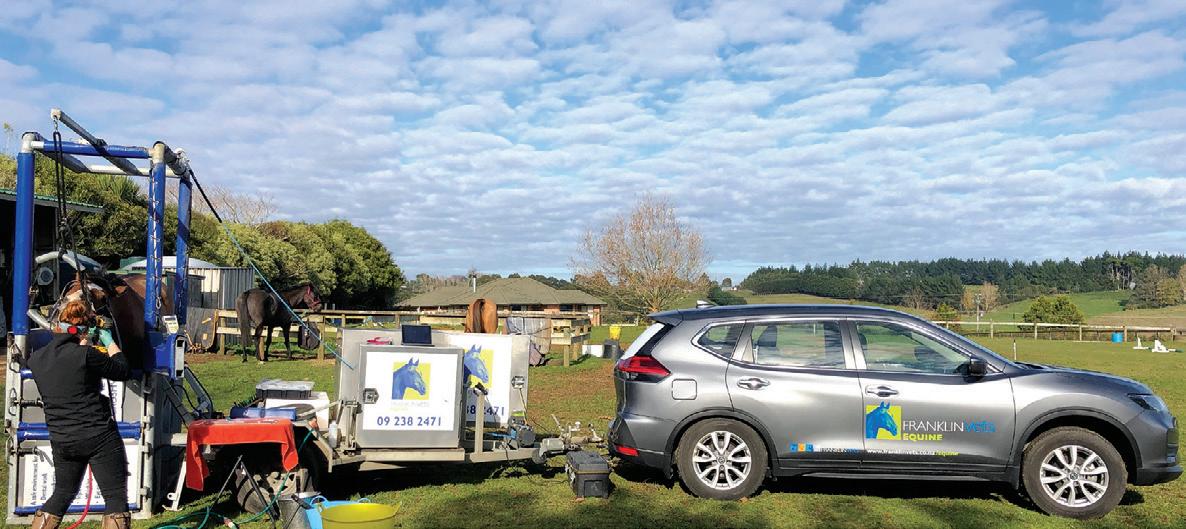
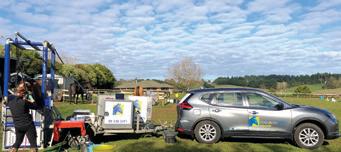







pilgrimage to Mystery Creek for New Zealand’s National Agricultural Fieldays is almost a right of passage for Kiwis involved in the primary sector. Recently, Pukekohe’s ETHAN BENNETT paid his first visit to this iconic event, as he recounts.
Ieased out of bed on a chilly Waikato morning for the first day of Fieldays 2023. With no prior experience, no gumboots and little understanding of what I was in for, I set o for my first visit to Mystery Creek.
The tra c flowed surprisingly well but I was soon taken aback by the sheer size of the event. The fields were filling up with rows and rows of cars, utes and vans, with a huge number of people pouring in through the gates as shuttle buses lined up en masse.
Stepping through the gates I grabbed my little green smart band only then realising I had no idea where to start! I passed row upon row of businesses, all presenting products and services, with sites devoted to everything from huge machinery to Kiwi clothing.
I was especially interested in

New Zealand's #1 Rural Real Estate brand has the track record you need
North to South, we have diffferent skills, and collecctively we know this country better than anyone The price of a paddock or the worth of a villa, we know the buyers of New Zealand, and everywhere you find us, you'll find our experts and high achievvers So contact your local Bayleys office for an altogether better experience
Whether you're moving on from a farm, orchard, or lifestyle property, ensure you secure your spot in our upcoming Country Magazine. We will ensure your property is among the pick of the bunch! To learn more about the Bayleys' Country portfolio visit: bayleys.co.nz/country-portfolio

meeting people from Franklin. This led me to visit four businesses with their own unique qualities, providing information from engineering innovations to whisky distilling.


Firstly, I checked out 2019 Fieldays Innovation Award winner, Future Post. This Waiuku based business produces recyclable fence posts made from domestic and commercial waste plastics. Their durable, UV stabilised posts are popular among multiple industries, including agriculture and horticulture. The company’s general manager, Hassan Wong, was friendly and welcoming as I took photos and listened in on their pitches.


Next up, Pukekohe’s Glenbrook






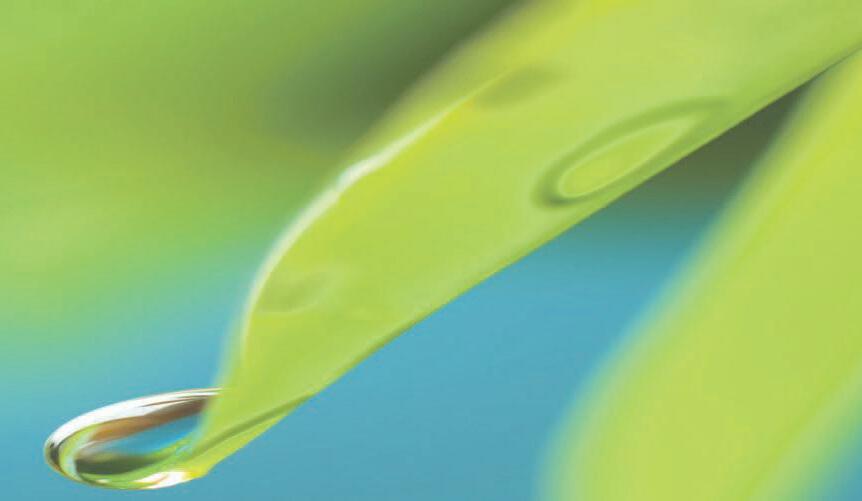

Machinery provided a look at some of their industry leading machinery. This included the impressive and versatile Avant 635 loader, which has more than 200 attachments, from seeding machines to leaf blowers. Demonstrations attracted many who stopped to watch as this mini loader was put through its paces.

I then wandered down to GJ Weck and Sons’ site. The people from this local business made me feel very welcome as we discussed their design and manufacture of wooden pallets, bins and crates. I even left wearing one of their hats and feeling rather keen to pop into their other business, Weck’s ITM, when next in Patumahoe.
My final stop was at Pokeno Whisky’s site where I tried some of their creations. Described as New Zealand’s largest single malt distillery, Pokeno Whisky has three main single malts included in its core range: Origin, Discovery and Revelation. This proved a wonderful way to end my big day out at Mystery Creek – cheers!
While I was lucky that the sun shone on my visit to Fieldays, being prepared with shorts and gumboots might be a worthy investment to make next time.


At least Ethan remembered where he parked and didn’t leave his headlights on as I did during my first two visits! – Ed

APukekohe farm is demonstrating how bountiful onion crops can be grown without heavy reliance on chemical fungicides.
“Our findings so far show it absolutely can be done without Mancozeb [a common fungicide], especially if you grow onion varieties less susceptible to disease,” farm manager, Rob Cox, explains.

“If you use individual products too many times, you run into resistance issues. Extending spraying intervals and making informed decisions about when not to spray gives you more options up your sleeve later if the risk level is high and you need to go back to shorter intervals of spraying.”

The Onions New Zealand operation uses tools such as weather and disease portal, MetWatch, as well

as Rob’s experience and local knowledge, to assess and manage risk. As a result, very little disease has been encountered.


“Using Metwatch there’s absolutely been a reduction in sprays. We’ve saved three or four applications over the life of the crop – good for the environment and there are some small cost savings there too,” Rob confirms. “I look at the modelling, compare it with my initial judgement and make a decision on what control measures to apply.”
Part of the A Lighter Touch programme, the farm sits alongside other local plots (for pumpkin, barley, brassicas and lettuce) where techniques and innovations are being trialled. The aim is to increase productivity and sustainability. See www.a-lighter-touch.co.nz for details.
Starting with a small pilot group early last year, Farmer Time (established by Beef + Lamb NZ) has mushroomed in popularity as it shines a new light on food production.
“The programme is incredibly important for children to understand the concept of ‘garden to table’,” says Phil Matheson from Takanini-based Out of the Dark Mushrooms. “It allows them to interact with real growers and farmers and experience what’s involved with producing and supplying food.”

Phil (who featured in our Oct-Nov 2018 edition) recently completed his first Farmer Time term, assisting Sandringham’s Edendale Primary through interactive sessions.
“Even though the students are aged 8-10 years, it may have an influence in broadening their work horizons to include agriculture and horticulture –we sure don’t need any more lawyers
and accountants!” he jokes.
Other locals involved include Mangatangi dairy farmer, Dave Millar from Enton Farms.
A year since its launch, Farmer Time has hit the mark, successfully connecting rural experts with classrooms nationwide, adds national coordinator, Marie Burke.
“It’s amazing to be a part of [Farmer Time] from its inception and see it grow so much. Our hard work to match teachers with farmers and growers has paid o and we can’t wait to see where it can go from here.”
More information for schools or farmers looking to take part is accessible via www.farmertime.co.nz.

For the most part, news cannot be served in bite-sized pieces. However, in e orts to serve readers a balanced diet of news (is there any such thing?), we’ve included the following matter-of-fact morsels to chew over.



A clearer picture of Auckland’s ‘most productive land’ is emerging since the National Policy Statement on Highly Productive Land (NPS-HPL) came into e ect late last year.
“Twenty-five per cent [of the land] has already been rezoned. It is very di cult to roll back,” senior policy planner, Ryan Bradley, said at a recent meeting of the Auckland Council Rural Advisory Panel. However, after urbanisation and rezoning, development on roughly 75% of Auckland’s ‘highly productive land’ would be completely prevented in most cases, he confirmed. “We don’t want our best farmland used for houses – the burden of proof is high [to rezone].”
The panel is concerned undeveloped land may become (e ectively) too expensive to farm and that the policy could restrict the ‘countryside living zone’ (including lifestyle farms), acting as a rural/urban bu er.
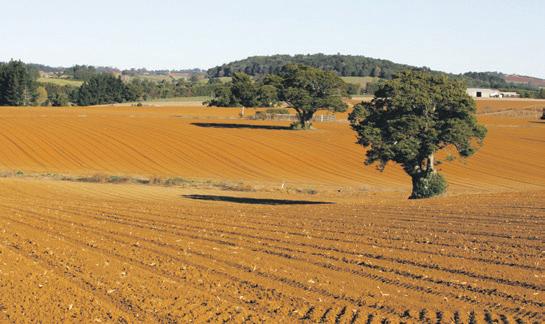
Council is using transitional maps but it is required to update these over the next three years. Some plan change requests have already been rejected including a proposed 700 home development near Waiuku, the panel heard. See www.environment.govt.nz to view the full National Policy Statement.
Original story courtesy of Laura Kvigstad, Auckland Council reporter, funded by NZ on Air

Despite Kiwis facing a ‘cost of living crisis’, a staggering 282 tonnes of broccoli is wasted each year, Richard Burke from Pukekohe-based grower, LeaderBrand, confirms.
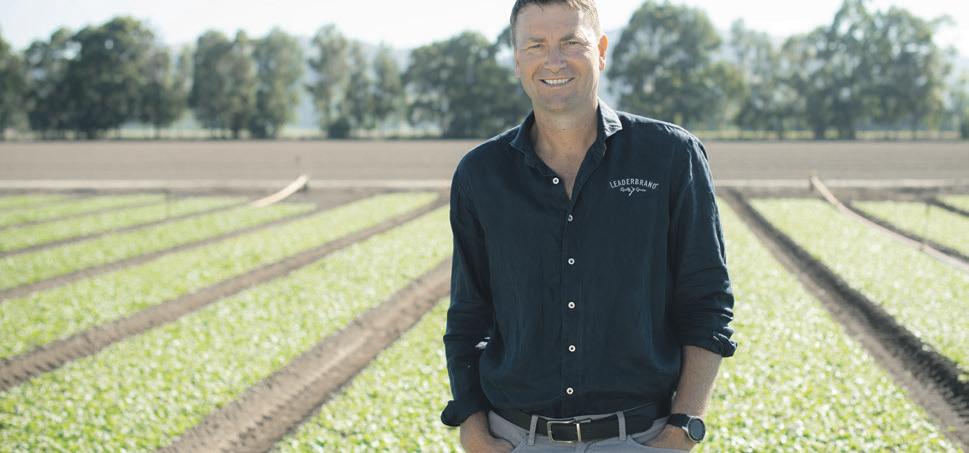
“Broccoli stalks are edible and taste great but [approximately] a third of us are throwing them away – it’s such
Seven ‘safety cameras’ are being installed on Franklin’s (mostly) rural roads as part of the Road to Zero programme. As reported previously, road tolls are (comparatively) highest in Auckland’s rural regions.



“We are pleased to work on a safety initiative that, along with safer speed limits, will help keep everyone safe on our roads,” Stacey van der Putten (Auckland Transport) says.
Following planning, preparation of local camera sites began in January. They cover such rural thoroughfares as Ostrich, Glenbrook-Waiuku, Linwood and PapakuraClevedon roads. For details search ‘safety cameras’ at www.nzta.govt.nz.
a waste! Why not maximise every inch of this nutrition powerhouse to make meals go further? It tastes great, adds texture plus you’ll be helping the environment.”
Extracting as much value from fresh produce is healthy for people and our bank balances, he adds.
Two all-beef patties (etcetera) may make a meal, but it won’t make a menu. McDonald’s 2022 shopping list also featured 945 tonnes of Franklin lettuce, 166 tonnes of Pukekohe tomatoes, 6.9 tonnes of beef, almost 12 million kilograms of potatoes and more.
“New Zealand is amongst the top 10 countries that supply beef to McDonald’s,” the burger chain’s Kylie Freeland says. “It’s great to supply a local menu where around 90 percent of ingredients are sourced from across Aotearoa and share this quality produce around the world.”











Locals and others in the primary industries have been on a roll (and on the honour roll) recently, or looking ahead at contests/rewards to come, including:


A central Waikato dairy farmer, Emma Poole, has become Young Farmer of the Year’s first female winner.


“We’ve finally knocked the grass ceiling o the roof!” she says. “There’s a long chain of women who have worked really hard to display the important role we play in agriculture. [They] have given me the confidence to stand up and give it a go. I’m just a product of what they’ve all achieved.”
One of those trailblazers, Karaka’s Lisa Kendall, was also among the finalists. Lisa first competed at finals’ level in 2017, finishing third in 2021 and second (to Emma’s brother, Tim Dangen) last year. Due to her age, she won’t compete again.

“Whether I win or not, it will be nice either way,” Lisa said prior to July’s final. “Whatever happens, I’m going to go out knowing that I gave it my all.”

Aorangi’s Peter O’Connor was named runner-up with Hugh Jackson (Otago/Southland) third at the contest held in Timaru. See www.youngfarmers.co.nz for details.












With dexterity, skill and intelligence, the cream of the crop rose to the top at Fieldays recently.

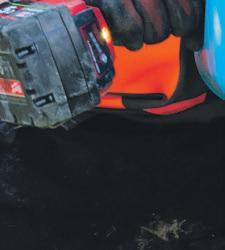




Tony Bouskill’s fencing skills saw him again claim the Golden Pliers (singles) while Je Joines’ joinery proved an asset as he and Mark Lambert won the Silver Spades (pairs). Cameron Hamerton nailed the Best First Year title and others also posted top results.



Glenbrook’s Lisa Bate was a ‘clear’ winner at the recent Estuary Art and Ecology Awards. Highlighting the ecological importance of east Auckland’s Tamaki estuary, the glass artist’s entry (titled Suspended Deposits) explored the impact of metal oxides on waterways. Work by this year’s finalists is on display at Howick’s Uxbridge Arts & Culture until August 26. For details visit www.uxbridge.org.nz.
Pukekohe’s Scott McElhinney could thank God he’s country boy after claiming Barfoot & Thompson’s Rural/Lifestyle Salesperson of the Year Award. Pukekohe branch manager, Nick Bates, secured Manager of the Year while Branch of the Year went to Nick and his team too. For a full list of winners and other top performers see www.awards.barfoot.co.nz.
Fieldays’ tractor pull drew in the crowds as Shawn Luxton wrenched the Weight Transfer Class title from opponents and Wally Sinton adapted to the conditions in the Modifieds Class.
One may not be able to put lipstick on a pig, but Hamilton’s St Paul’s Collegiate School proved a lip balm can be made from goats’ milk, winning the Young Innovator Innovations Award. Waikato Milking Systems won the Prototype section with eClean Envirotech (Early-Stage) and Wilderlab (Growth & Scale) also receiving accolades.
As mentioned in our last issue, Ricks Terstappen won the No.8 Wire art award. However, with votes now counted, Waikato Creative Stitchers has been named as the People’s Choice for their work titled The Gate See www.fieldays.co.nz for more.


A new greenhouse gas testing plant and pasture development are on the government agenda as it seeks to lower greenhouse gas emissions and boost primary production.
“[This] sees $17.7 million go towards the construction of [the facility] that will support our emissions reduction plan without burdening farmers,” Mr O’Connor said following a June announcement. “The goal is to support farmers to [better] do what they are already and get the best price for it.”

Funded by the Centre for Climate Action and industry partners, the new plant will allow researchers to measure changes to methane emissions from cows. It compliments other work including e orts towards a methane ‘vaccine’ for livestock.
Further projects are aimed at increasing pasture productivity.
“The Digging deeper: roots and resilience project will test whether extended periods of deferred grazing will encourage pasture roots to grow larger and deeper, which (in theory) would increase water and nutrient use e ciency, reduce nutrient losses and increase pasture resilience to recover from extremities in the weather,” Mr O’Connor confirmed.
“The other project, Ensuring a Sustainable Future Pasture Presence in NZ’, looks at new ryegrass pastures,
expected to increase productivity, and provide farmers with options to reduce nitrate leaching, increase carbon sequestration and improve water use e ciency.”








In addition, the Career Pathways Scheme will further aid farmers in reducing emissions in the face of climate change, he added.

“We’re backing farmers and growers by supporting the training of more than 40 private farm advisers alongside the Ministry for Primary Industries’ On Farm Support team. Helping people take practical steps to reduce on-farm emissions, lift sustainability, adapt to change, and recover from events like Cyclone Gabrielle is important work.”
Clarity regarding water (in more ways than one) could be in the pipeline should government plans pan out.


“Freshwater farm plans will allow for flexibility and variability within farming systems, rather than a ‘one size fits all’ approach,” Mr O’Connor said recently. “Plans will be phased in, region by region, over the coming years. This provides farmers certainty and [time] to prepare their first plan after regulations take e ect in their region.”
Beginning in parts of Waikato and Southland, the initiative requires farmers and growers have a plan in place if they have 20 hectares or more
of land for arable or pastoral use, five hectares or more in horticultural use, or 20 hectares or more in combined use. Legislation enabling farm plans was passed in 2020 as an amendment to the Resource Management Act.
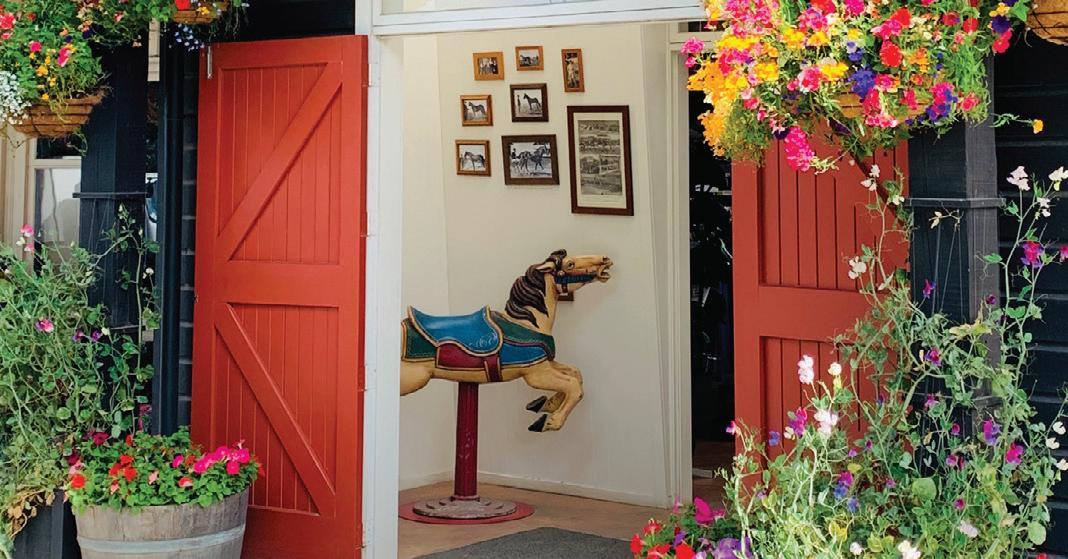
“We’ve listened to and acted on the concerns of the sector around how to make a system workable on the ground and roll it out in a way that gives farmers time to make the necessary preparations.”
More information regarding these regulations is accessible online via www.environment.govt.nz.
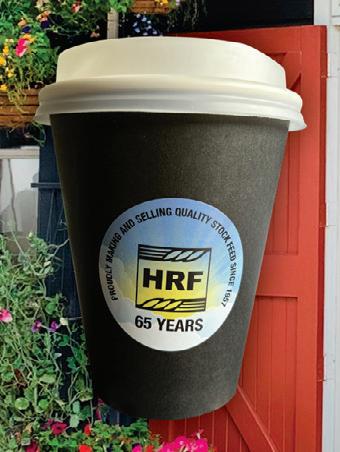

Outlook for Thursday was DD Smash hit but the outlook for primary sector exports appears to have hit a new high note. Released at Fieldays, the latest SOPI (Situation and Outlook for Primary Industries) revealed a new record of more than $56 billion in export earnings.
“This government has always backed our farmers, growers, fishers, and foresters to achieve success,” Mr O’Connor said. “These record results show that the future is bright as the worst of the economic headwinds look to be behind us.”
Increases were noted across the board led by dairy, seafood, and processed food exports. The full report is available via www.mpi.govt.nz.
Back from recent travels, Damien O’Connor (Minister of Agriculture, trade and more) had little time to let the grass grow under his feet, as our summations of reports from his o ce indicate.
Damien O’Connor

Gidday folks. Although it was wet enough to plant right through last summer, many of us realised this way too late to do anything about it so the standard winter planting season is ramping up now. It’s definitely wet enough to get a spade in the ground but, hopefully, you’ll get a chance to read this before you pull your gumboots on.
As rabbits, hares, possums and pukeko can all be very hard on young trees, we’re called on to protect many planting operations each year. All too often the problem isn’t noticed until plants are in the ground, but it’s so much easier to tidy the pests up before planting. Replacing trees can become extremely expensive and losses of up to 50 per cent caused by ‘animal browse’ (feeding) are quite common. So, whenever possible, it’s a good idea to have a thorough look across your site and determine which pests are likely to be in the immediate area prior to planting.
Rabbits are easily detected because burrows will have fresh soil at their entrances, and they like to scratch and
leave little piles of poo on any clear areas, track edges, clay pan etcetera. Look for scratching and poo; if you see these in multiple areas around your planting sites, you can bet that rabbits will get stuck into trees as soon as they’re in the ground. Just five or six rabbits can each annihilate 2-3 trees every single night!
Hares tend to live in paddocks with longer grass and don’t make burrows, which makes them harder to find than rabbits. Fortunately, they are out throughout the day, so you’re likely to locate them with a bit of e ort. Hares are, generally, found in much lower densities than rabbits, but the damage they cause is often much worse because of their unique browsing habit of nipping the entire top/centre of young trees out. This means they stop all normal growth for virtually every tree they browse.
As for possums, look at the proximity of the nearest bush block or forested area and any other expansive bits of possum-friendly habitat –macrocarpa hedge rows for example. If you have good habitat nearby with no control in place, you’ll have possums. Possums are probably the most selective browsing pests, causing most damage to more expensive
plants, which is a real heartbreaker.
Man oh man, pooks are shockers with new plantings! Pukekos are most often found near creeks and other waterways, including ponds. Plants within a kilometre of their habitat are in danger. Not only do they browse plants, pooks pull them out one by one, chew the roots and discard them. It’s a good idea to keep count of the pukeko in your area – they operate in family groups 5-20 strong. Knowing their location and numbers will be invaluable if you need to control them. More Pukeko tend to move into any given area in the few months following control e orts, but this is fine as it’s only necessary to keep them in check while trees are becoming established. Once the trees have become well rooted, they’ll be fine.
Often just a single visit from a pest control expert will remove enough rabbits, hares and possums to ensure plants become established safely. However, as pukeko can be tough (and they are cunning as all hell!), it will probably take a few visits to remove all the problem birds. Still, this is cheaper than replacing plants… by a long ‘shot’!
That’s it from me for this month. Wrap up warm, go explore you planting areas and let me know if you find anything you need help with.
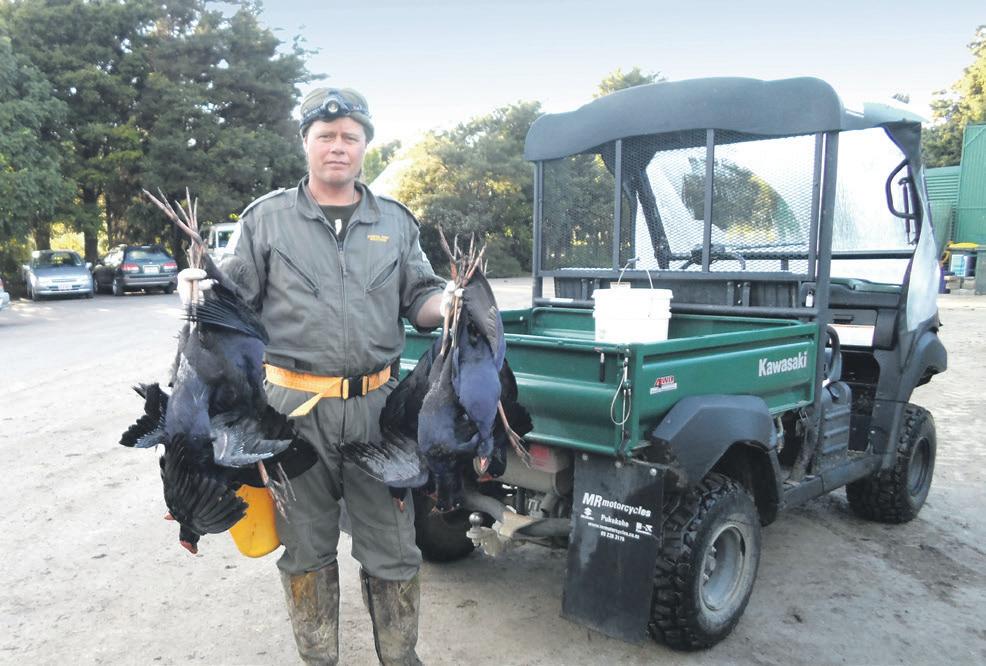

The X7 is the elegant fusion of presence and power. Despite its majestic appearance, it gives an impression of lightness and agility thanks to its athletic styling. At the same time, the considerable spaciousness of the interior offers an interplay of exclusivity, functionality and freedom – all the way to the third row of seats. Plenty of room for the entire family and the power to have fun in tow.
 *This offer is exclusive to Coombes Johnston BMW (Hamilton) customers only. Colour variations may vary from what is shown and this offer is limited to while stocks last. For technical specifications of this model contact Coombes Johnston. Accessories and features shown may not be part of the standard specification for the price shown.
*This offer is exclusive to Coombes Johnston BMW (Hamilton) customers only. Colour variations may vary from what is shown and this offer is limited to while stocks last. For technical specifications of this model contact Coombes Johnston. Accessories and features shown may not be part of the standard specification for the price shown.


The sun is shining as I write my latest column, which is a real surprise as there’s been so much rain that the paddocks everywhere are boggy. So many people from our o ce are away overseas at the moment that I think they must all be out hunting for the sun!

Last month I wrote about my friend Tony Dickinson and his cruel fight with dementia; this month I am writing a little obituary for him. I knew him for well over fifty years and we had become more like family than friends. He is the first of our group of friends to die and, sadly, the youngest.

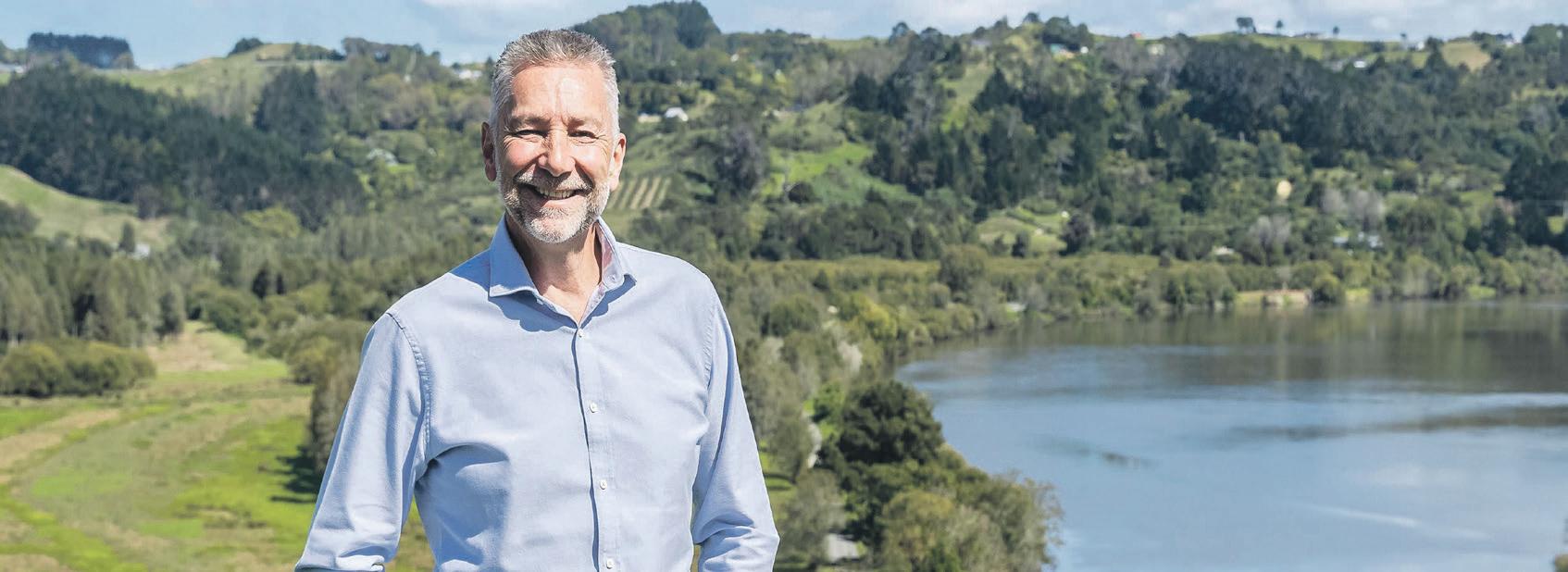

Tony and Val were local to Franklin. He had his first stables in Te Hihi, just o Kidd Road, before they moved to a larger property on Wright Road. The stables were certainly growing larger, and it was there that his passion for breeding standardbred horses really shone. The final property they built was in Waiau Pa where the stables were truly grand. Cleverly, he chose the prefix ‘Alta’ for the horses he bred, and he bred a lot of champions. Alta Dream Lodge was the name of their property and also of his breeding business.
Tony’s breeding business was highly successful, so much so that the North Island Standardbred Breeders Association recognised him for his outstanding contribution to harness racing. Respected trainer Adrienne Matthews summed him up so well on Harness Racing NZ: ‘He was an absolute gentleman, he loved breeding and had invaluable knowledge.’
Tony was more than a horse man, he was a successful businessman, avid reader and, most of all, a wonderful family man. He was always so proud of his family that he would have been thrilled how well they respected him at his funeral. He was the most positive person I have ever known and never a bad word about anyone


would pass his lips. His passing leaves a huge gap.


















We have run numerous stories over the years about Tony and his horses, but I’ve also written many times about our trips overseas with Val and Tony. It was always fun planning where we should go next. I still believe our river cruise from Amsterdam to Budapest was the best. When I see advertising for river cruises, I’m reminded of how fabulous it was to have fourteen days of luxury meandering down the Rhine and into the Danube with more sta than passengers on board. We had so much fun!
On that sunnier note, next month it will be closer to spring and the sun will shine. Until then, goodbye to our good friend, Tony.


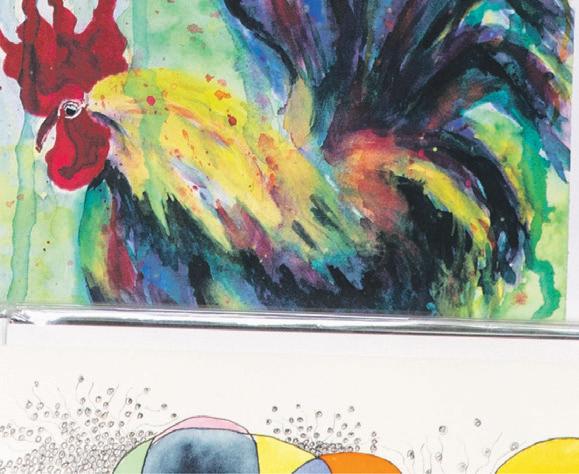




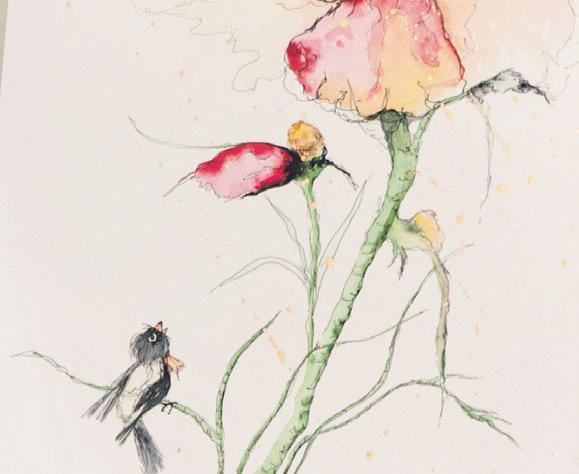


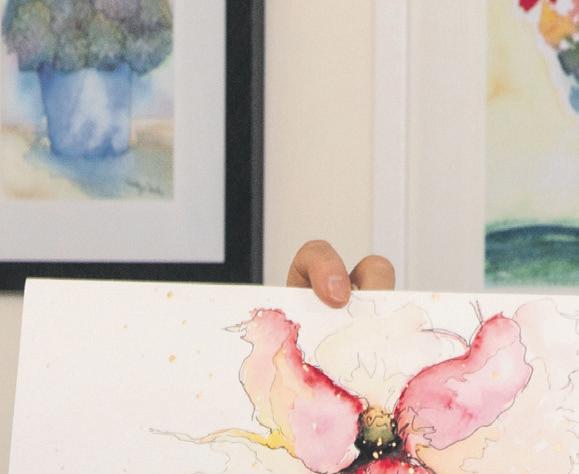







athy Cowin credits her 88-year-old mother’s prolific art portfolio as inspiration for her desire to paint, especially watercolours. But if anyone should visualise a mature Cathy spending her days in the Clevedon countryside painting to her heart’s content it would be far

In between painting, overseeing a growing group of Clevedon Creatives + Co – their gallery and shop – and teaching a weekly art class, Cathy manages to sandwich in a bookkeeping job and her role as a hypnotherapist. She also works in the family’s small textile business making haberdashery fringes. Perhaps best known for her flamboyant, colourful roosters and more subtle florals, plus pen and ink work, Cathy says it is only in the past six or seven years that she has had time to devote to painting. However, her artistic journey has embraced a variety of craft paths.
“I’ve sewed all my life and turned my hand to a number of crafts; anything creative –decoupage, mosaics,
fabric work and more. As a teenager, I admired the pencil drawings sketched by my older, architect brother. More recently I’ve drawn on memories of his work and developed my own style, but my heart lies in watercolours,” she says.
“It was my mother, Mary Maxwell, who really guided me back into painting. I always wanted to paint like her, so when mum asked if I wanted to attend night classes with her at Te Tuhi in Pakuranga, I was up for it.”
Cathy says that studying under highly acclaimed Australian artist, Kohl Tyler-Dunshea, proved a revelation for her.
“She didn’t just show us how she painted, she taught technique while encouraging us with our own personal style. I’ve tried to adopt the same approach with the art group I now teach in Clevedon.”
The Clevedon art classes are a natural progression from founding Clevedon Creatives in 2019. Cathy, together with fellow artist Helene Henare (now based in Maraetai), discussed the idea of starting a weekly social group for local artists and crafters.
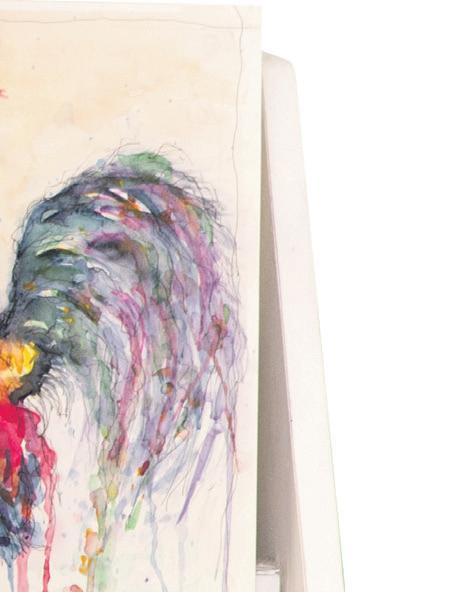
“It’s much like a drop-in centre where members can talk and work together,” Cathy elaborates. “Initially, there were four of us running the group – Helene and I, Elizabeth Ambrose and Emma York. We started in the Clevedon District Centre and grew quickly.”
Come their first Christmas, these creatives were o ered the use of a former saddlery premises for a two-day, pop-up shop displaying their work.
“We never closed! Soon it was open five days and now it’s seven,” Cathy laughs.

Showcasing an eclectic range of art and crafts, the gallery/shop is operated by an enthusiastic


group of volunteers, most of whom are talented artists or crafters in their own right. Visitors will find everything from sculptures, paintings, quilts and glass works through to baby clothes, homewares, decorative wall art and much more.
Over time, work and family pressures have seen some founding members depart on new challenges. However, just when Cathy was thinking she needed help most, her daughter, Caitlin Sefton, stepped in to co-manage the enterprise.
























“It’s been wonderful, giving me time to run the weekly art class which I love. My hypnotherapy training showed me that art can be an emotional outlet, helping people to become aware of their own creativity. Many don’t realise how creative they are until they try,” Cathy says.
“No one here has to be fantastic, they just need to enjoy what they are doing. Sometimes the idea of mixing with ‘artists’ can make people feel apprehensive and that should never happen. We are community-focused and I see how much members’ confidence grows as they mix and learn from each other. What’s more, it’s important for me, as a teacher, to be patient and not dominate with my style.”
When it comes to her own paintings, although time to paint has often been limited, Cathy remained encouraged through her contacts with other artists.
“At last, I am pursuing my own direction. I love painting roosters, perhaps because they are fun, cheeky and have personality, which I hope I capture on canvas. I’d also like to do more botanical works. I want to achieve the soft, translucent quality flowers often have – that’s my goal at present even though life is extremely busy.”
Funding from Franklin Arts Centre has given art classes in Clevedon a welcome boost but there’s a lot more going on among a community group where artist, Cathy Cowin, is a driving force. HELEN PERRY reports.
In town and country many share similar concerns with regards to crime. However, we can also join forces to become part of the solution.
“Locals can help crack down on crime by joining Community Patrols of New Zealand (CPNZ),” Port Waikato MP, Andrew Bayly, advises. “This national organisation has patrols in Pukekohe, Waiuku, Pokeno, Tuakau and Te Kauwhata. They help prevent crime and reduce harm. Essentially, they are extra ‘eyes and ears’ for the NZ Police. I have been out at night with these local patrols and they do a fantastic job.”
For more information visit www.cpnz.org.nz.

New upgrades are underway on the Southern Motorway, Mark Kinvig from Waka Kotahi (NZ Transport Agency) confirms.
Rising flood waters and inflation have contributed towards rates increases in north Waikato. In addition to targeted hikes in certain areas, locals from this area of Franklin can expect a general increase of seven per cent.
“Unforeseen factors, such as a 7.7% increase in the cost of living since 2022, have exceeded our initial predictions,” Waikato District Mayor, Jacqui Church, confirms. “These higher inflation rates have directly



a ected our operational costs and financial capabilities. It is essential for us to keep pace with rising costs to ensure the uninterrupted delivery of essential services.”
The rate increase will also enable the council to ‘bolster depleted disaster recovery’ following the Anniversary Weekend floods and Cyclone Gabrielle.
Waikato District Council’s full annual plan is accessible online at www.waikatodistrict.govt.nz.
“Commuters can look forward to an extra tra c lane in both directions [and] a brand-new shared path running along the western side of the motorway.”
Stage 1B2 of the SH1 Papakura to Drury ‘fast track’ project covers upgrades between Papakura BP and the Bremner Road overbridge near Drury as well as the new path. The project is expected to be complete by 2027.

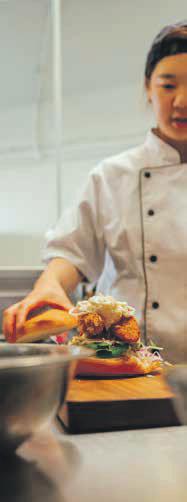


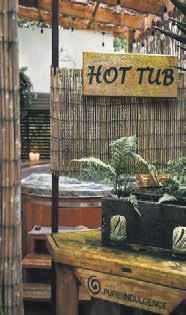
Each month, new businesses choose to become part of our bustling community but this time we have more greetings to extend than usual.










Recently opened, Broadway Food Company is proving a hub for dining. Its fabulous menu of outlets includes BigSmokin’Mo Barbeque, Smashed As Smashburgers, India Rocks Eatery, Woodspirit Turkish Pide and Kebab on Broadway. Open from 12pm, seven days, this popular food hall has indoor and outdoor seating with a warm, ambient atmosphere at 20 Broadway. It’s next door to The Beer Spot, which o ers more than 30 craft beers and a selection of wine and gin. Another new addition, Papakura Kukbab Korean Restaurant also adds to Broadway’s wide variety of eating options.
While many come for the food, they stay for the shopping! Sagi Jewellers has become a rich addition to our community (on Great South Rd), as has Tasha Anderson Barrister (Broadway). And, the good people at Moda Furniture have also made themselves right at home on Broadway too.
We are so pleased to see business booming in Papakura and I look forward to welcoming further businesses next time.









56A




A warm welcome is assured for new locals in Papakura, Tracy
reveals.Funded by the Parliamentary Service. Authorised by Andrew Bayly, Parliament Buildings, Wgtn. KC15980






From aerial to static displays, NZ Warbirds rose to the occasion at Ardmore recently, as these photos show. June’s Warbirds on Parade open day (held while our last issue was being printed) provided the perfect opportunity for more than just a flying visit. However, Warbirds’ visitor centre is open weekends – for details see www. nzwarbirds.org.nz.
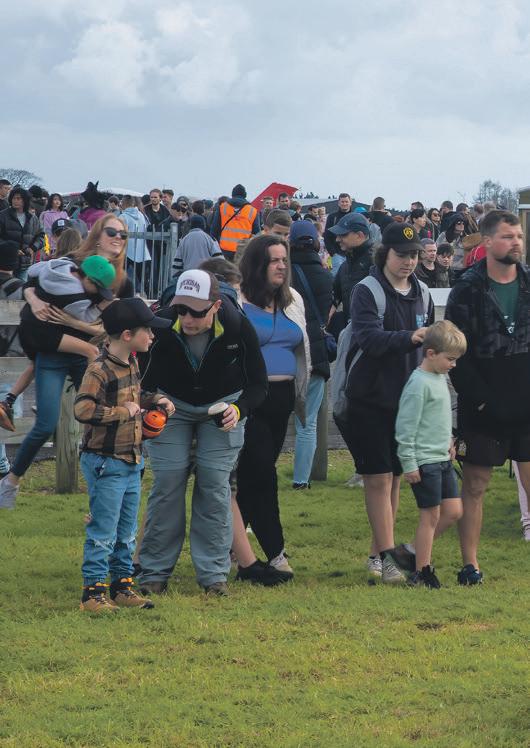




Natasha Harris


takes a closer look at some of the latest hair fashions.


We are bombarded with fashion editorial, including articles and photos, across many channels. Fashion sets the scene, it’s a symbol of our ‘tribe’ and adds to our sense of belonging. These days, life isn’t about following fashion, it’s about uncovering what fashions make us unique.

At Alberts, our mission is to help our clients to break down all this inspiration and tailor it to them. When looking for a change or a new look, clients research magazines, watch the runways, social media and celebrity culture. We take cues from fashion, with colours that radiate, blend and merge, so they always look their best. Personalisation is key as clients often crave the e ortless appeal they see on social feeds. When we create colour for our clients we take their lifestyle, commitment to colour and individual needs into account.
While staying in step with fashion regarding colour, we are also at the cutting edge when it comes to technologies and services such as:




























• NEW GROWTH SHADOW: applying a shadow to hair that can be short or long to make it appear shaded. This helps with seamless growth with little maintenance needed


• NEW GROWTH Tap: a short blend between natural hair and highlights to add softness where the highlights are placed
• FILTERING: applying a sheer reflect over the top to make it seem as though hair is seen through a lens or filter. This can create more suitable and durable colour

• ZONE TONING: refining various areas of hair in di ering reflects or depths to enhance variation

For more about the latest hair fashions, and to see what’s right for you, call our expert team on 09 238 7576 or visit www.alberts.co.nz to book a complimentary consultation or appointment. We look forward to seeing you soon!




Challenged to highlight the importance of making the most of waste, locals rose to the occasion at this year’s Eye on Nature Wearable Arts Awards.
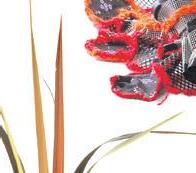
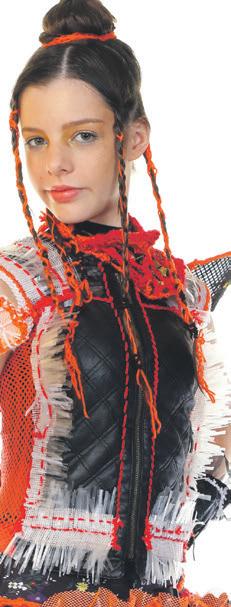


Securing top spot in the Secondary Schools category, Kyra and Raquel Sheldon (Pukekohe High) impressed judges with their garment titled Patched Angel, featuring such (otherwise) disposable materials as GIB tape, CD case plastic and a weed mat.

In addition, Alexandra Stuart-Burton and Sienna Kelburn-Griggs (Glenbrook School) won a merit award in the Primary and Intermediate section for their Aroha ki a Papatūānuku ensemble.

“By transforming


waste materials into stunning wearable art, these tamariki and rangatahi are inspiring us all think di erently about fashion consumption and get innovative with waste,” says Sterling Ruwhiu from event organisers, the Beautification Trust. “The fashion industry has a significant impact on the environment, and Eye on Nature Wearable Arts provides a creative platform for our young people to reimagine sustainable fashion.”
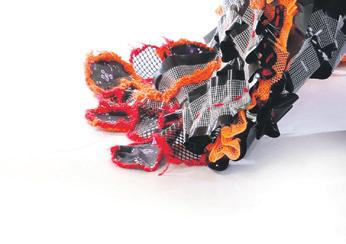




















Winter days may be grey, but these beauty products are designed to keep skin glowing and shining year-round.
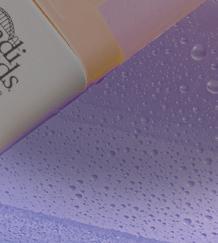
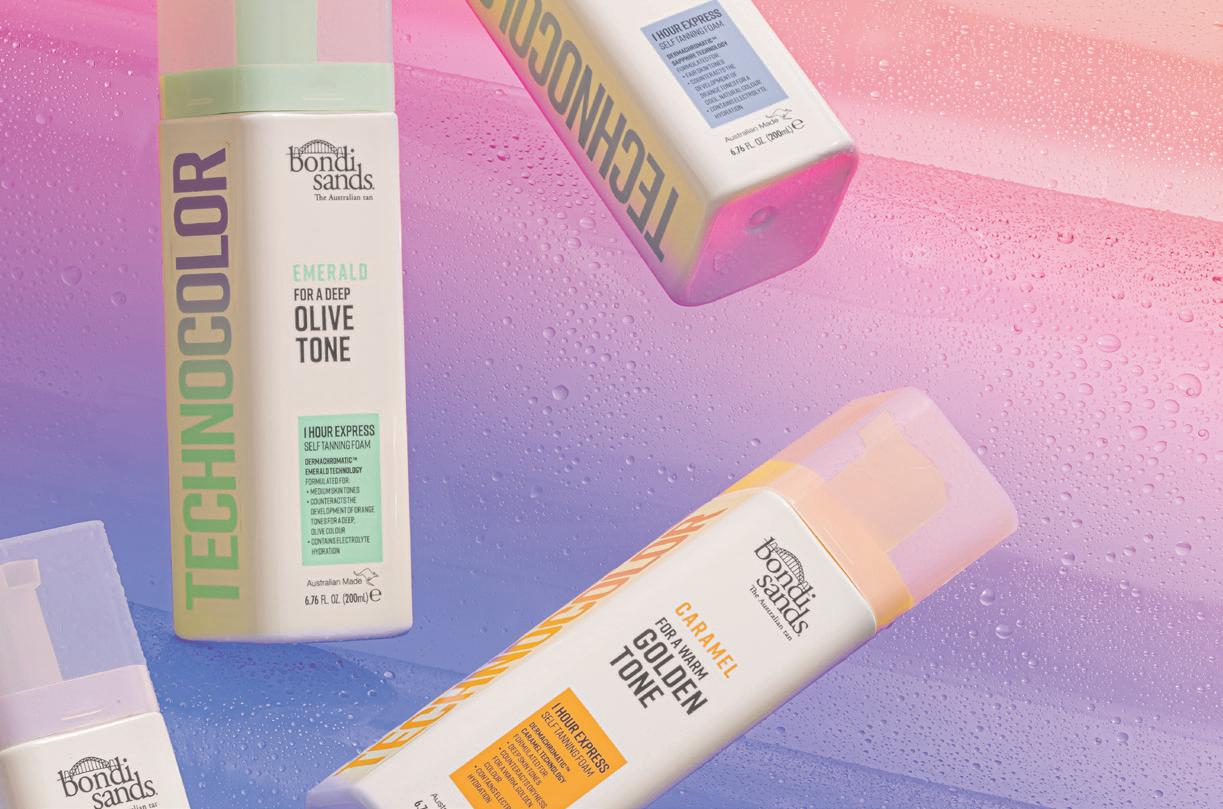

Part of the latest Rose & Shine collection from DB Cosmetics, this Luminous Hydrating Foundation (RRP $24.99) aims to deliver a radiant and dewy complexion. Certified vegan and cruelty-free, this foundation features a light gel texture, for medium to full coverage, and nourishing ingredients including vitamins and hyaluronic acid.















With its 12 pure and precious oils and extracts, JUARA Radiance Vitality Oil (RRP $140) is a fast-absorbing, dry face oil. Formulated to address signs of premature ageing it is designed to increase elasticity and boost radiance to minimise fine lines and wrinkles. The meticulously crafted product seeks to help restore the skin’s youthful look. Perfect for use under foundation, it can be applied with a moisturiser or on its own.
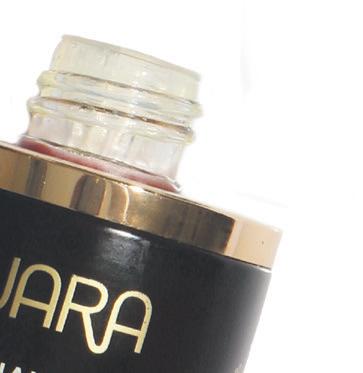
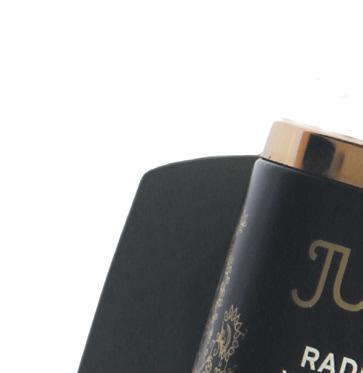



Using laser skin analysis technology, the new Technocolor range from Bondi Sands (RRP $31.99 each) is designed to work with varying skin tones. The range consists of four products boasting an all-star cast of tanning ingredients including electrolyte hydration and colour enhancers. Each product is specially formulated to focus on such tanning concerns as orange or unnatural tones, dehydration, streakiness and poor colour.





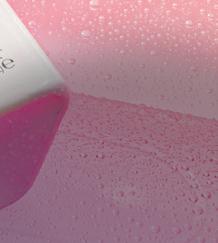


Most of Franklin’s rural people may have reasonable access to major healthcare providers but residents of more remote corners of New Zealand continue to struggle. However, Dr Grant Davidson from Hauora Taiwhenua (Rural Health Network) sees some hope on the horizon thanks to a new plan.


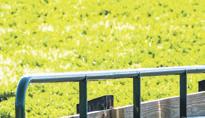

“We have been strongly advocating for innovative new training initiatives based on proven overseas research that shows, if you train rural people in rural areas using rural health professionals, graduates are more likely to stay practicing in those rural communities,” he says. “We are so pleased to see that the [new Health Workforce Plan] reflects our thinking.”
The recently released plan from Te Whatu Ora (Health NZ) features rural training schemes. Dr Davidson asserts that this is a “relief” to see considering health care in rural areas has been at “breaking point”. Similarly, the National Party has announced rural health could expect more investment under its stewardship.





“This is a potential game changer. We have a party committing to significant ongoing funding to train the many hundreds more doctors needed across the country,” Dr Davidson adds.
“More importantly, they are prepared to… specifically deal with the rural GP shortage. To finally see a commitment to funded action is exciting. It will provide our sector with hope at last.”

Suppor t y










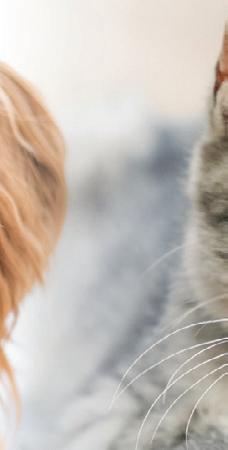










Pets can face stressful situations beyond their control, such as loud parties, long trips, and fireworks Pet Calm offers a natural solution with non-narcotic herbs to soothe pets Try it for a calm and relaxed pet or simply for when a good night's sleep is needed As used by kennel proprietors nationwide



PetRe cover y is a nat ur al supplement t hat combine s de er velvet , glucos amine, and chrondroiton to supp or t he alt hy joint s and mobilit y in older c at s and dog s It provide s nut r itional pre cur sor s for c ar tilage he alt h and promote s over all well-b eing wit hout side- effe c t s











ORDER NOW! 0800 502 402 or online www.silberhorn.co.nz





At Mercy Radiology we use the most advanced 3D Mammography screening and diagnostics to detect small cancers long before a lump is felt. Make time for your health. Don’t delay.

Book today: radiology.co.nz

COMPLETE RADIOLOGY SERVICES INCLUDING X-RAY, ULTRASOUND,
We see you clearly E mārama ana mātou i a koe
Could









Do you have any of the following symptoms?
Restless legs • Heavy, achy or tired legs • Night cramps • Leg ulcers • Poor leg wound healing • Darkening leg and calf skin • Leg discomfort after sitting or standing for a long time • Itchy legs • Spider veins • Ankle swelling • Varicose veins • Past history of DVT You may be su ering from varicose vein disease

Delphi Clinic has three clinic locations: Pukekohe (Seddon Medical Building, 13 Hall Street), Remuera and Hobsonville. We are covered by all major insurance companies including Southern Cross, AIA, NIB, Partners Life, Accuro, Unimed and more.



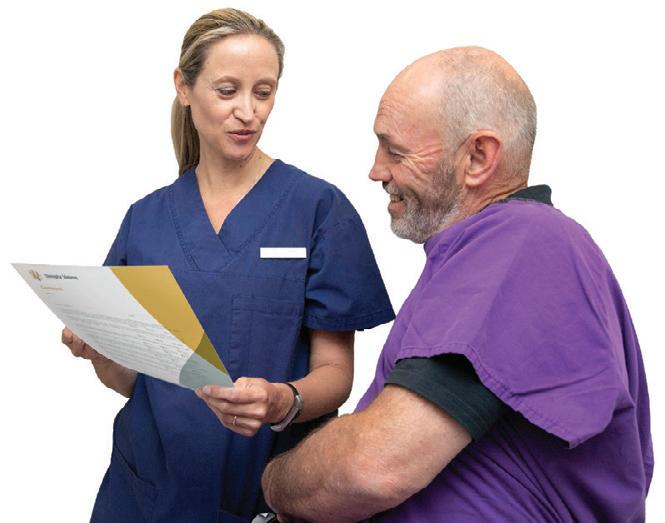
For referrals/enquiries email reception@delphiclinic.co.nz





Phone 021795744
www.delphiclinic.co.nz










KC15813

It’s all about you at Cutting Edge Plastic Surgery. Dr Adam Greenbaum and his dedicated team operate a thriving plastic surgery and skin screening service with its focus rmly on personalised care.





“I treat you the way I would wish my family or myself to be treated by a surgeon,” says Adam. “The foundation of our success is in partnering with our patients. We empower them to make the right decisions by arming them with all the information they need to feel con dent in achieving a realistic outcome.”
Whether you want advice on skin cancer; optimising your appearance; have problems with hand function; or you are considering surgery to reduce, li or enlarge breasts or a “tummy tuck” Adam’s focus is on providing you with the best advice, service and expert care possible.
It’s quick and easy to get an appointment directly by phoning 09 238 8881. All you have to do is pick up the phone and chat with one of the friendly reception sta . There’s no need to travel to Auckland for any major surgery requiring a general anaesthetic because Adam’s patients needing a hospital facility for bigger

operations on hands, breasts or tummies can have their surgery at Franklin Private hospital two streets away.
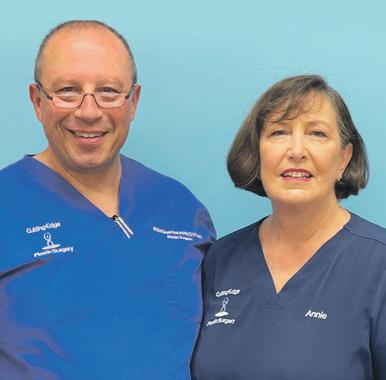



“Our skin screening service provides a one-stop-shop right here in Pukekohe. Quite simply it’s one phone call to book a full body skin check. Our service saves patients the expense of a screening visit, plus a GP visit if there’s a problem, then to be referred to a specialist for which they pay yet another consultation fee. With our practice it’s one referral for a specialist assessment and opinion, so you not only save money but more importantly time.
“From skin check to a diagnosis and treatment is a matter of days not months which also removes the stress of juggling multiple appointments and referrals in the process.”

For the next few weeks, we have an o er open to new and established patients who can have our personal skin check with total body photography and a dermatoscopic examination of the skin from scalp to soles of feet for 75% of the usual price. Phone 09 238 8881 or email reception@ceps.nz to take advantage of the 25% discount until August 31st.


To nd out more check out Adam’s website at www.ceps.nz or phone the practice on 09 238 8881







By ‘hokey’, Franklin, Pascall has a new twist on a Kiwi favourite in the bag. Designed to sate the tastes of those who chew, when it comes to the crunch Hokey Pokey Lumps are liable to have everyone put their right (or left) hands out in store. Featuring the honeycomb flavour of hokey pokey, these treats are available (RRP $3.29) at confectionery stockists nationwide.

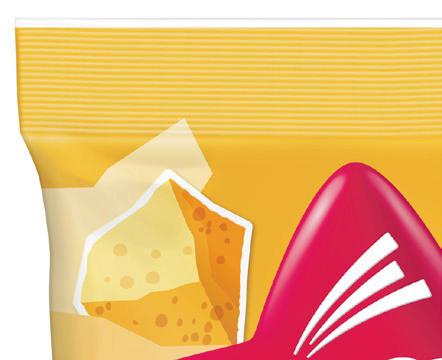
To enjoy the cream of the crop we need not have a cow, man! Intended to deliver the same creamy texture as regular sour cream, Angel Food’s dairy-free alternative is ideal for vegans or anyone with allergies or intolerance to dairy products. This ‘food of the gods’ (angels at least!) is available (RRP $7.50 per 240g tub) from selected supermarkets and health food stockists.
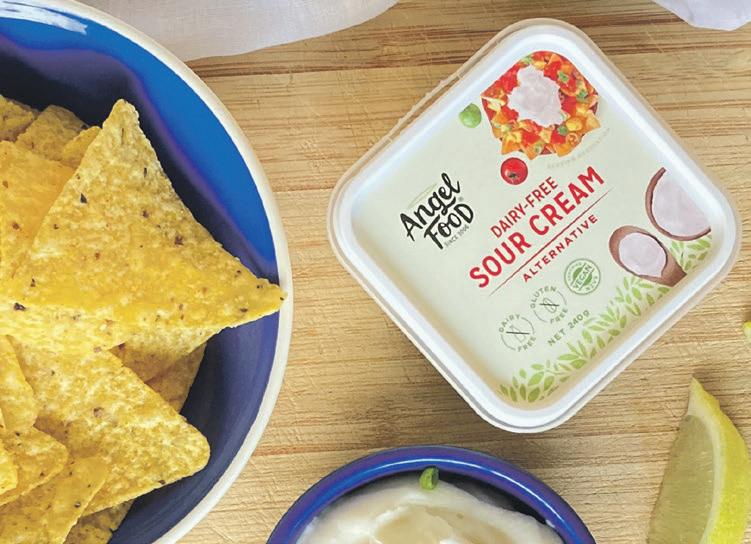

Chase away the winter blues with a lovely pair of coconuts! A versatile product, Blue Coconut Oil has a high smoke point so it’s perfect for cooking without smoking out the house. What’s more, it’s soothing for weather-ravaged skin when used as a makeup remover, moisturiser or even as a hand cream. Blue Coconut Oil is available from specialty food stores in two varieties: regular (RRP $9.99) and virgin organic ($13.99).
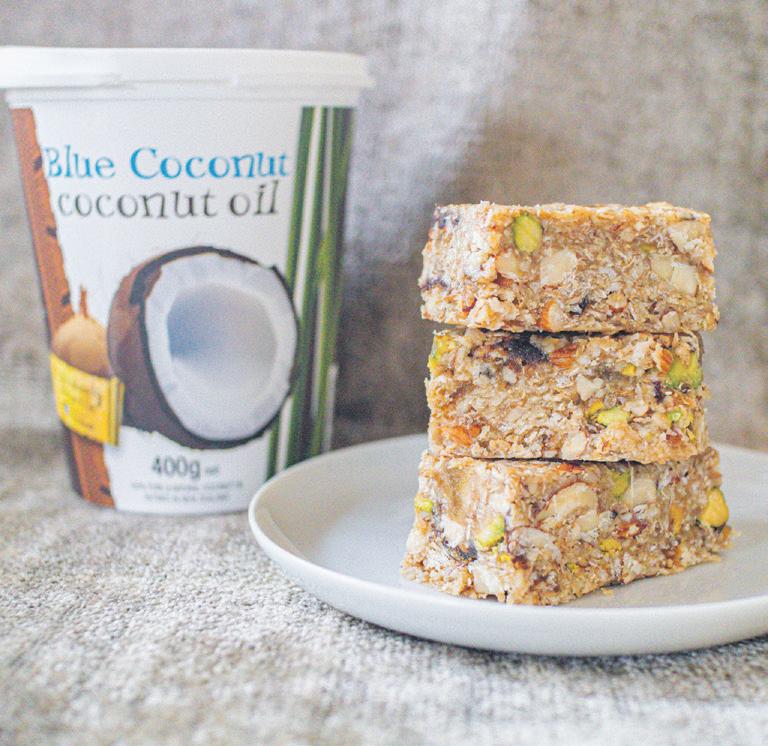
Ingredients

3/4 cup Blue Coconut Oil
3/4 cup creamed honey


A pinch of salt
1 tsp cinnamon or mixed spice
3 cups rolled oats
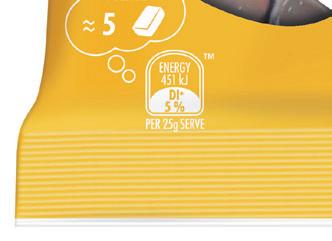

2 cups raw almonds (chopped)
1/2 cup desiccated coconut

1/2 cup nuts/seeds
1 cup dried dates or apricots (chopped)
Method

Melt coconut oil and honey in a saucepan (also add spices and salt) until dissolved and foaming slightly. Reduce heat to low. Add oats, turning to coat evenly. Add almonds, coconut, nuts and/or seeds, stir and mix thoroughly. Add dried fruit for a minute or so, until softened and coated. Using a large spoon or potato masher, press mixture firmly and evenly into slice tin lined with baking paper. Leave to chill in the fridge for at least a couple of hours before serving.
tipples to tasty treats, life can be ‘fare’ enough, thanks to these new (and recent) additions to
So often served on the side during winter, this recipe sees mushrooms take the ‘mains stage’.
1-1/2 cups all-purpose flour
2 eggs
1 tsp salt
3 tbsp olive oil, divided


100 grams dried wild mushrooms
2 tbsp butter
2 large brown onions (or three small), minced
4 cloves garlic, chopped
150gms button mushrooms, finely chopped
150gms cremini mushrooms, finely chopped
2 cups hot water
10 sprigs fresh thyme, leaves removed
1/2 cup white wine
1/2 cup ricotta
1-1/2 cups cooking cream
Leafy greens, to garnish
Salt and pepper to taste
Place the flour on a clean work surface and form it into the shape of a nest, using fingers to create a bowl-sized divot in the centre. Crack the eggs into the nest, add the salt and a tsp of olive oil.
Gently whisk the eggs with a fork, adding a little flour a bit at a time, making sure not to break the nest. As the dough begins to form, mix ingredients by hand. If the dough is too dry, add a teaspoon of warm water. Knead the dough for about five minutes, until it’s smooth and shiny. Wrap dough in clingfilm, and leave it to rest at room temperature.
Pour the dried mushrooms into a bowl along with the two cups of hot (near boiling) water and set aside.
In a large skillet, heat one tablespoon each of olive oil and butter. Sauté half the onions until they’re translucent before adding half the garlic, 100gms of the button
mushrooms, 100gms of the cremini mushrooms and half of the thyme leaves. Continue to sauté over high heat until all the water from the mushrooms has evaporated. Season with salt and pepper.
Deglaze the skillet with white wine and reduce until it’s dry. Pour the mushroom mixture into a bowl and allow it to cool for a few minutes before adding the ricotta cheese. Mix well and adjust the seasoning as needed then set aside.
Drain the remaining (uncooked) mushrooms, setting aside one cup of the water. Place on paper towels or a clean cloth. Heat remaining olive oil and butter in the skillet. Sauté remaining onions until they’re translucent. Add the other half of the garlic, the rehydrated dried mushrooms, the rest of the fresh mushrooms and the remaining thyme leaves. Once again, sauté over
high heat until the water from the mushrooms has evaporated. Season with salt and pepper.
Deglaze the skillet with the water from the dried mushrooms and reduce until it’s dry. Lower the heat, add the cream and simmer over low heat for about five minutes. Blend this cream sauce in a blender until it has a smooth, uniform texture.
Roll out the dough with a rolling pin until it’s about five millimetres thick. Separate it into two large sheets. Place a tablespoon of the mushroom filling every five centimetres along one sheet of dough and cover it with the second sheet. Using a round cookie cutter, cut the ravioli into rounds of approximately five centimetres diameter.

Cook the ravioli for three minutes in a large pot of boiling, salted water. Drain pasta and divide it into serving bowls. Top with the cream sauce and garnish with leafy greens.

A hearty winter classic, shepherd’s pie has long drawn the flock to the table. Complete with an all too Kiwi twist, this comfort food classic comes courtesy of Kathy Paterson and the table topping team at Beef + Lamb NZ. For more see www.recipes.co.nz.

500g lamb mince
1 onion, finely chopped
1 carrot, finely chopped
400g chopped tomatoes
2 cups vegetable stock
1 tbsp Worcestershire sauce
2 tbsp finely chopped parsley
1 tsp chopped fresh thyme
500g kumara, peeled
1 cup cheddar cheese, grated
Heat a dash of oil in a large heavybased saucepan over a medium-high heat. Add the lamb mince and brown, stirring with a wooden spoon to break up the mince as it browns. Transfer into a bowl and set aside. Reduce heat to low, add another dash of oil followed by the onion and carrot. Cook for 10 minutes, until onion is soft. Return lamb to the saucepan with the tomatoes, stock and Worcestershire sauce.
Bring just to the boil then reduce heat, partially cover and cook mince at a gentle simmer for 30 minutes
while stirring occasionally. Stir through the chopped herbs and season. The mince should be thick but not dry.
To prepare the topping, boil kumara in lightly salted water for approximately 25 minutes or until tender. Drain and, using paper towel to keep hold of them, peel the kumara before cutting it into round slices.
Preheat the oven to 190°C and lightly grease a medium ovenproof dish. Spoon mince into the dish, top with the kumara slices and sprinkle with grated cheese. Place in the oven to cook for 25 minutes or until hot and bubbling. Serve and enjoy!
Short but sweet, the persimmon season provides the perfect chance to get those cold winter days o to a healthy start. For more seasonal recipes see www.5aday.co.nz.

Serves: 2 | Preparation: 5 mins
Cooking: 5 mins
2 persimmons, quartered and thinly sliced
1 cup rolled oats
2 cups water
1/4 cup milk
1 tbsp honey or maple syrup
Topping options
Persimmon slices
Coconut chips
Cinnamon
Chia seeds
Walnuts
Dried cranberries
In a saucepan, cook oats in water. Begin with a medium heat then reduce to simmer and cook for around five minutes or until all the water is absorbed.
Stir in the milk and honey or maple syrup before adding the persimmons. Serve porridge warm with persimmon slices or other toppings added.
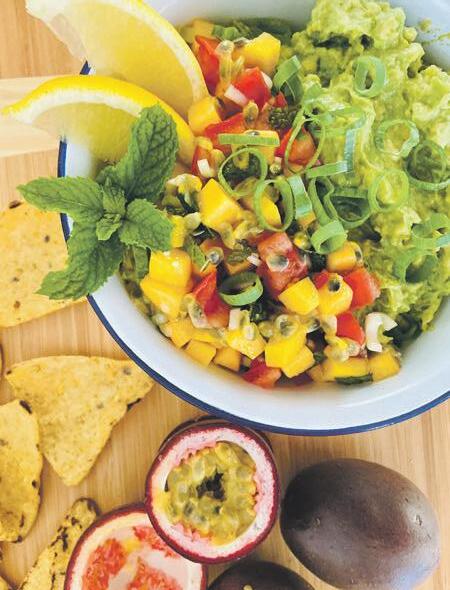
A zesty number designed to bring on the zing during winter, this recipe comes courtesy of 5 + A Day –see www.5aday.co.nz for more.
Serves: six | Prep’ time: 10 minutes

3 passionfruit

1 peach, finely diced
1 spring onion, finely chopped
1 tomato, seeds removed, finely diced
4 mint leaves, finely chopped
A squeeze of lemon juice
A drizzle of extra virgin olive oil
Add all ingredients to a bowl and gently mix to combine. Serve with guacamole as a dip or as a side with fish or chicken.
From the Vietnam War to the signing of the Civil Rights Act, 1964 was eventful year. Apparently, a once little-known collection of mop-topped lads from Liverpool was also visiting North America and Europe, as this book recalls. Featuring a collection of photographs, many only recently discovered, this book is sure to appeal to history bu s as well as fans of a band that changed music and the very concept of celebrity forever.
Paul McCartney: 1964 – Eyes of the Storm | RRP $150 | Allen Lane




Not the preserve of old ladies, swallowing things we shouldn’t is a trait displayed by farmers too, well by at least one. With his quirky retelling of a strange nursery rhyme, Peter Millett provides a country (and all too Kiwi) twist in this book best suited to children aged up to five years.
Peter Millett & Paul Beavis (illustrator): There Was an Odd Farmer Who Swallowed a Fly | RRP $21 | Pu n

Spring may seem like it’s a world away but it’s almost time to get into gear (in more ways than one!) and prepare to hit those dusty trails. Thankfully, from northern Scotland to the South Island, around the corner or around the world, the travel veterans at Lonely Planet are on hand to advise us. Featuring 75 long-distance cycling routes, this guide is ideal for cyclists intent on going the distance.
The Backpacker’s Guide to the World | RRP $44.99 | Lonely Planet
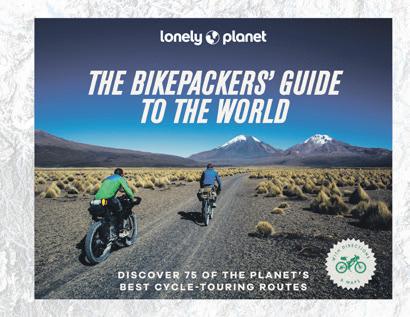
She may have a passion for science but how does it explain the voices in Vivvy Bouchet’s head? Thanks to an impossible prediction, this dedicated astrophysicist saved a boy’s life; now the boy has grown to become a policeman who insists on enlisting her services in cracking a cold case as this thriller unfolds.

Julia Heaberlin: Night Will Find You | RRP $37 | Michael Joseph


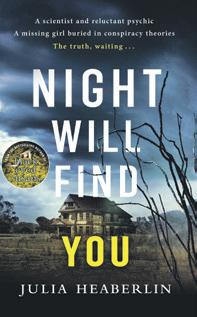


It’s all go for Raro’ as Karen McMillan ‘cooks’ up a fantastically elastic adventure. Dealing with a grumpy gecko and a brazen pearl heist, Kiri, Jed, Emma and Ethan have their talents stretched to the limit. Ideal for readers aged 7-12 years, this standalone book will be enjoyed by fans of the Elastic Island series too.
Karen McMillan: Elastic Island Adventures – Rarotonga | RRP $21.99 | Duckling Publishing





What happens when a pukeko and a tuatara come across a time machine? Allow Sam Ru ell to explain! The first book of a promising new series (intended for readers six and up), this comic catastrophe could be educational but, more importantly, it’s bound to encourage more than just a few chuckles.
Sam Ru ell: Para Pukeko and the Stupid Time Thingy | RRP $21 | Pu n Paperback
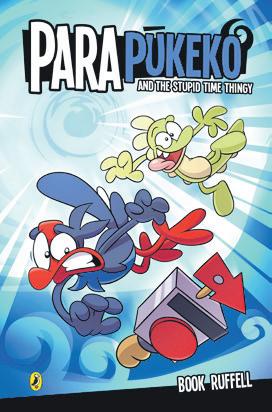


A friend and his wife, who married young by today’s standards, bought a property as soon as they le home — and haven’t paid a day’s rent in their lives.




Lucky, perhaps. Ahead of their time, definitely. Now enjoying their fourth home before either turned 30, they are the best possible example of why you can never be too young to buy property.
A er all, the earlier you buy, the earlier your home will be paid o and you can move on to bigger and better things. It’s true that homeownership isn’t for everyone, but the advantages far outweigh the initial lifestyle disadvantages.



Unlike other investments, your principal place of residence is exempt from capital gains tax should you sell; you can modify your house or garden at any time (subject to council requirements); your repayments are for your benefit, and the equity in your home can provide a springboard with which to leverage borrowing for investment properties. As with all prudent investment decisions, preparation is the key to successful home buying.

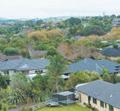







Parents can play their part, encouraging their children to establish good saving habits by matching any contributions in a no-withdrawal savings account. Government subsidies for first-home buyers are also well worth securing. It is imperative to have a healthy deposit of at least 20 per cent of the purchase price. They say the first $1 million is always the hardest to make, and the same could be said of a home deposit.
Savings can be accumulated by putting away a small amount each week for the rainy day that is sure to arrive in the future. Even if it’s only $20 a week from a part-time job when you’re 15 or 16, this forwardthinking approach will net at least $1000 each year. Coupled with compound interest and continual saving, this amount slowly turns into $5,000 and then $10,000 before you know it.
That’s why it’s important to develop good savings habits and try to avoid credit cards or pay them o monthly. The same applies to car loans, as a solid credit history can smooth the road when applying for a mortgage.
Research is another important part of the process. It’s a historically proven fact that the majority of people buy within a sevenkilometre radius of their current home, so it pays to know your own area. Family and friends can be tapped for advice and never be afraid to ask questions.
Even better, go to auctions regularly and build up a good knowledge of the market, including attending open for inspections, monitoring property prices and getting to know the agents who influence it like Team Town and Country. It’s a good idea to take notes of what you like in a property so that you can gauge exactly what you want and can a ord when the time comes to buy.
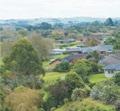

You can even make a financial plan for yourself, outlining your annual budget, while adding to your real estate knowledge, budgeting and credit rating by using the

vast resources of the internet and gaining professional financial advice.





























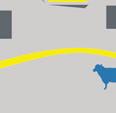














Like most things, starting small is probably the most prudent move before moving up to the next level. Most people will buy at least three or four properties in their lifetime, as the cyclical e ects of marriage, births and death force buyers to reassess their priorities.

The most important aspect is to be ready when opportunity knocks, and not to overextend oneself by borrowing too much. That can only lead to trouble when and if interest rates rise, or your personal circumstances change.

Want to talk to a Team That knows the market then talk to Team Town and Country – they bring you the best of Town and Country.




Around the home or lifestyle block pruning trees can be a breeze for people in the know. However, because some jobs can be di cult or even dangerous for those out on a limb (literally!), calling in a local arborist may be our best bet.
The first point to address is when to prune. In general, pruning during the heat of summer is not a good idea as trees are under stress when they’re producing new leaves.


Autumn is worse as pruning can delay dormancy. While the ‘when’ is largely dictated by the type of tree, late winter is (overall) a good time, for most fruit trees for example.
Before pruning any tree consider its structure and plan cuts as best as you can. Think about why pruning is required – for aesthetics, to remove ‘dead wood’ or to promote growth – as these factors will

influence how we set about the rest of the task at hand, minimising workload and stress on the tree.
Pruning simply to improve the look of the tree (especially with regards to ornamentals) shouldn’t be overdone as each cut made puts strain on the plant leaving it more vulnerable to diseases.
If dead or damaged branches could cause a safety issue, they should be removed regardless of the time of year. But if branches (including healthy ones) are within a few metres of powerlines professional help is needed.

As is the case with any DIY work, the right tools are essential. Hedge trimmers may be enough for smaller branches provided they can make a clean cut. Otherwise, loppers and decent quality saws are essentials. Make sure cutting tools are sharp as dull blades (and















dare we say ‘dull people’?) may cause excessive damage.







Don’t skimp on protective gear, such as goggles, gloves and even ropes and harnesses if required. While unnecessary damage to trees is best avoided, they should heal... people may not!
If ropes are needed to ensure larger branches don’t cause a calamity when falling, it’s another red flag indicating, once again, that we should hand the job over to someone with more expertise and specialised equipment.
Good luck, happy cutting and, most importantly, stay safe!
PAKURANGA STORE
64a Ti Rakau Dr, Pakuranga 09 576 5225





info@lawnheat.co.nz





















The origins of this plant’s name is as plain as the nose on one’s face! With blooms reminiscent of the gaping maws of firebreathing lizards, snapdragons are from the genus Antirrhinum, derived from the Greek for ‘nose-like’.

Native to southern Europe, these annuals produce a rich range of colourful blooms emitting tempting fragrances. Their medium, tall and dwarf varieties are often grown in borders, containers or rock gardens, and they will bloom in cooler weather.


Seeds are (ideally) sown late winter to early spring, but seedlings can be planted up until early summer, as long as the soil remains cool enough.
If growing from seed, sow in trays of seed raising mix and they should germinate within a couple of weeks.



When planting out, find a spot with full sun to partial shade and freedraining soil. Space seedlings (roughly) 30-40cm apart to allow plenty of room to grow and so there’s strength in numbers against wind. Extra support from stakes or by being grown along fence lines can help taller varieties. Apply a little fertiliser every couple of weeks and deadhead wilted blooms during flowering. Able to survive with little to no water, snapdragons prefer
moist soil, however too much can stunt their growth. Water from the base to help prevent disease. While they are resistant to most pests and diseases, snails can be problematic, so employ snail bait as needed.

Depending on the variety, these roaring glories should ready for picking within a few months. As cut flowers they deliver an abundant selection for the ‘vace’ at your place… or the ‘varse’ at ‘ahs’, for that matter!



You’ll find us at 33 Nelson St – inside an old warehouse – packed with new John Young furniture at wholesale prices, collectables, antiques, gifts, garden features, homewares – all at knocked down prices. A great place to wander around and look for that something special for you or for a gift. We are Auckland largest clearance centre for NEW John Young Furniture at crazy low prices, lounge suites, dining tables, dining chairs, beds plus much more. We have a full range of mattresses at affordable prices – and they are great to sleep on.
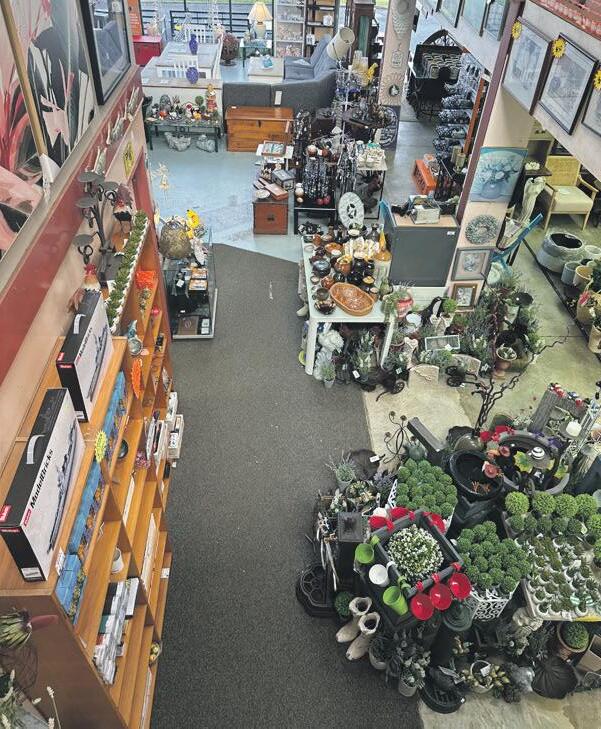

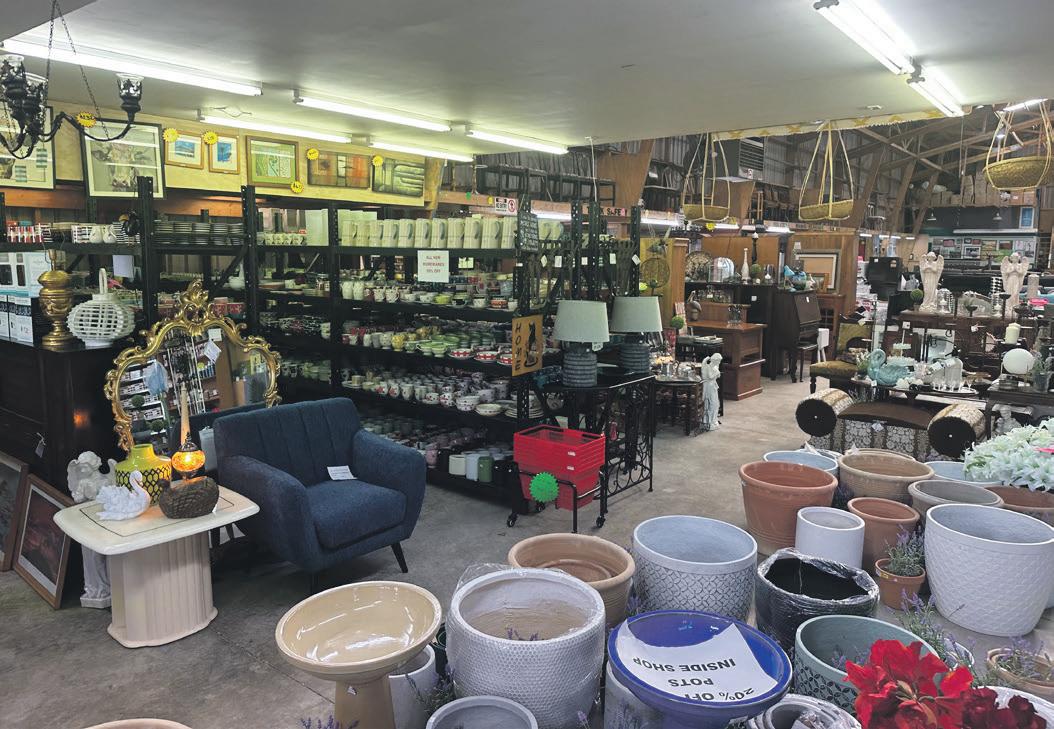

Quality furniture direct from the warehouse at wholesale prices - a massive showroom packed with bargains. Takanini Traders has the largest selection of John Young Furniture at wholesale and less prices – lounge suites, dining tables, chairs, beds, furniture at prices you won’t believe. This is ALL NEW furniture with warranties. Buy quality at knocked down prices and get more bang for your buck.



ENLIGHTENMENT: The development of oil lamps meant that many activities (including study) were no longer restricted to daylight hours. In this way, the lamp was not just a breakthrough in and of itself, but it also permitted more rapid development of other technologies.


Of course, Germany’s Opossum Design isn’t trying to spark a new age of ‘enlightenment’, but its range of oil lamps does pay homage to a humble invention, one which changed the course of history.

Featuring slick lines and an industrial look favoured in many modern homes, Opossum’s oil lamps are available via www.opossum-design.com. The company also o ers some electric models as well as furniture and more.







